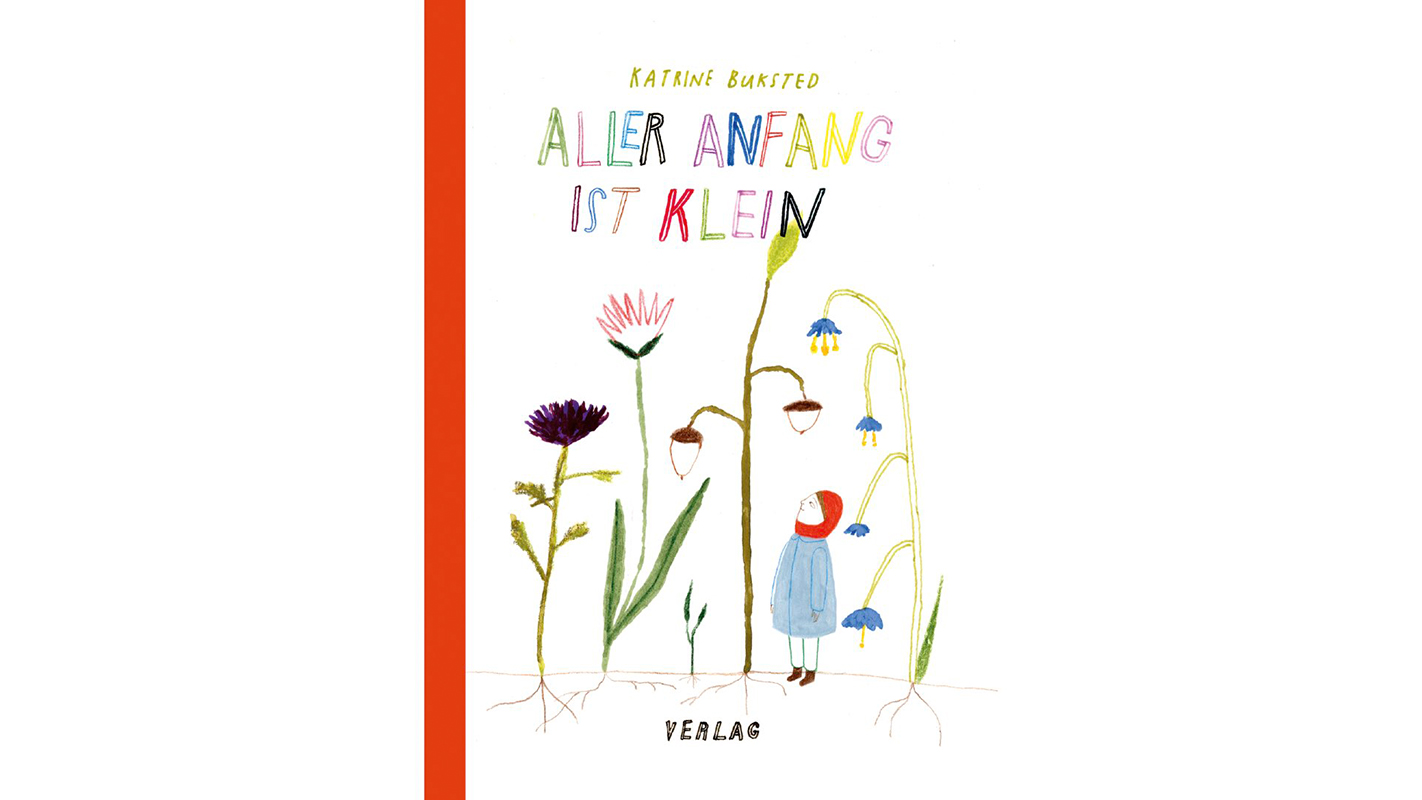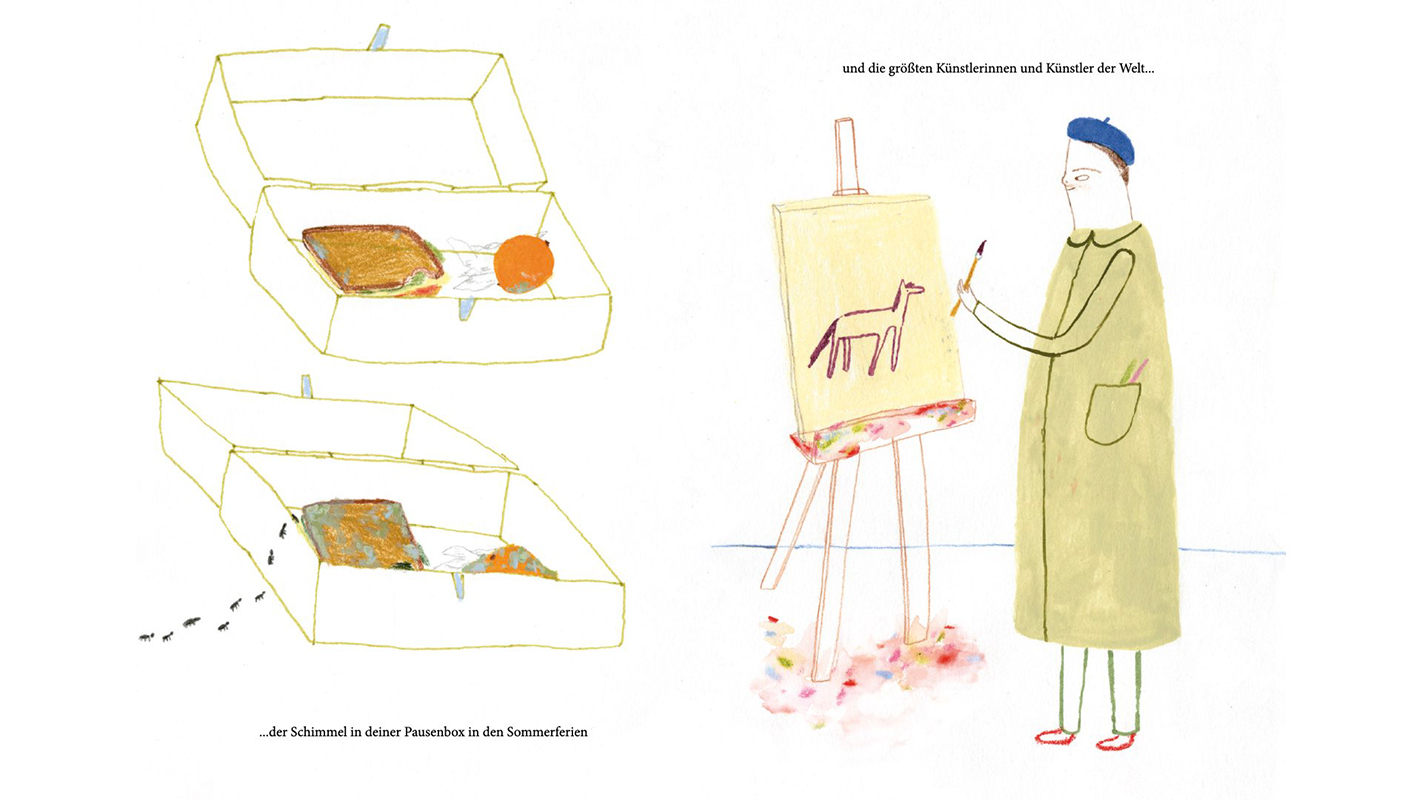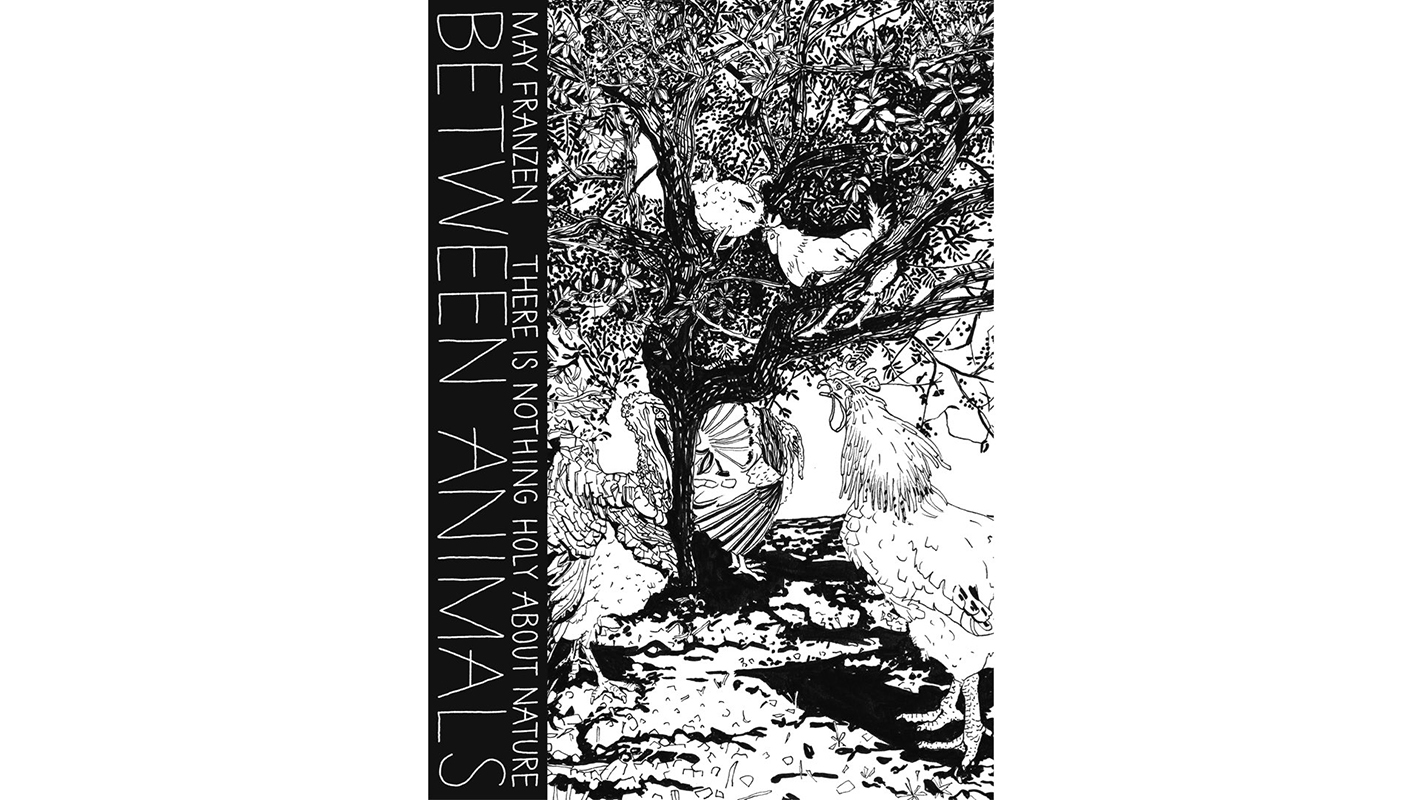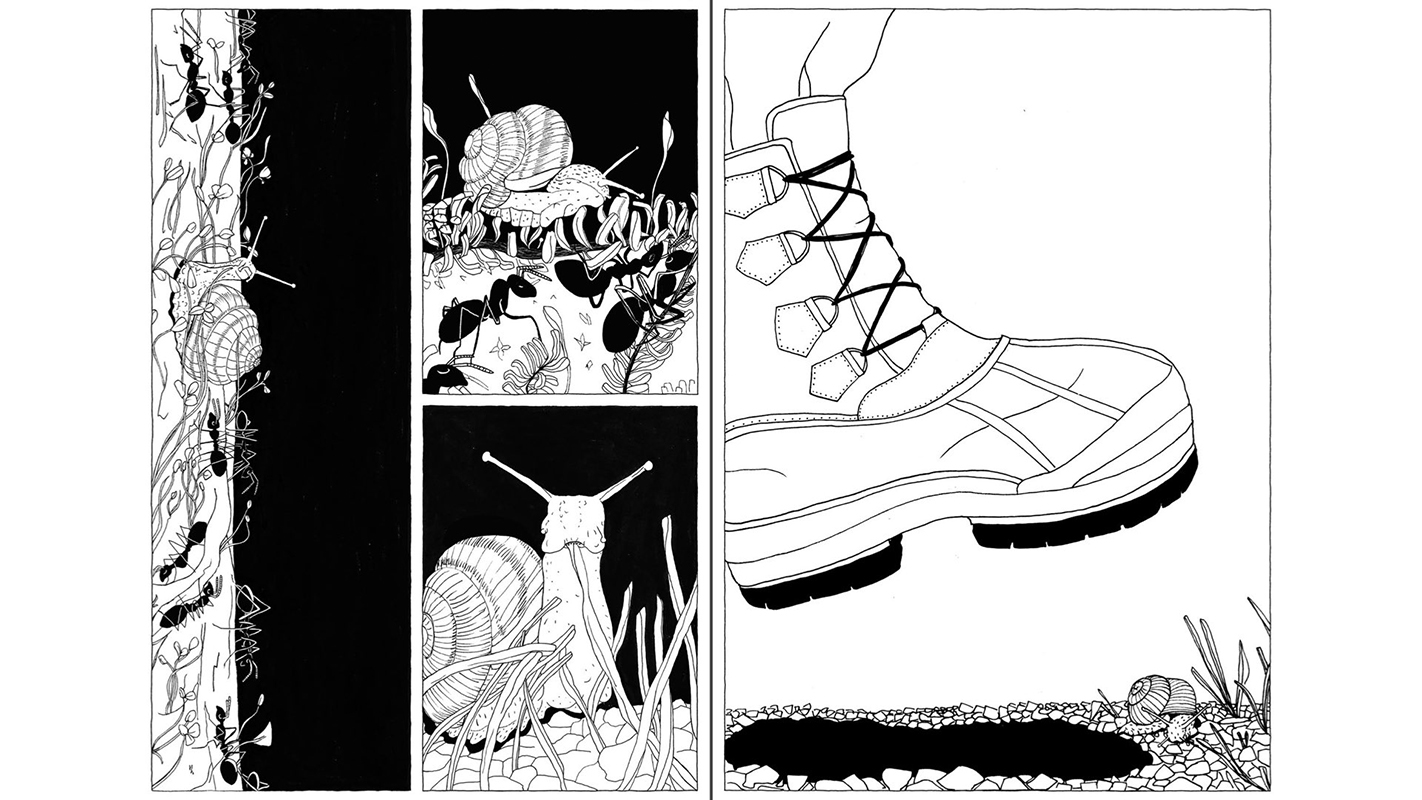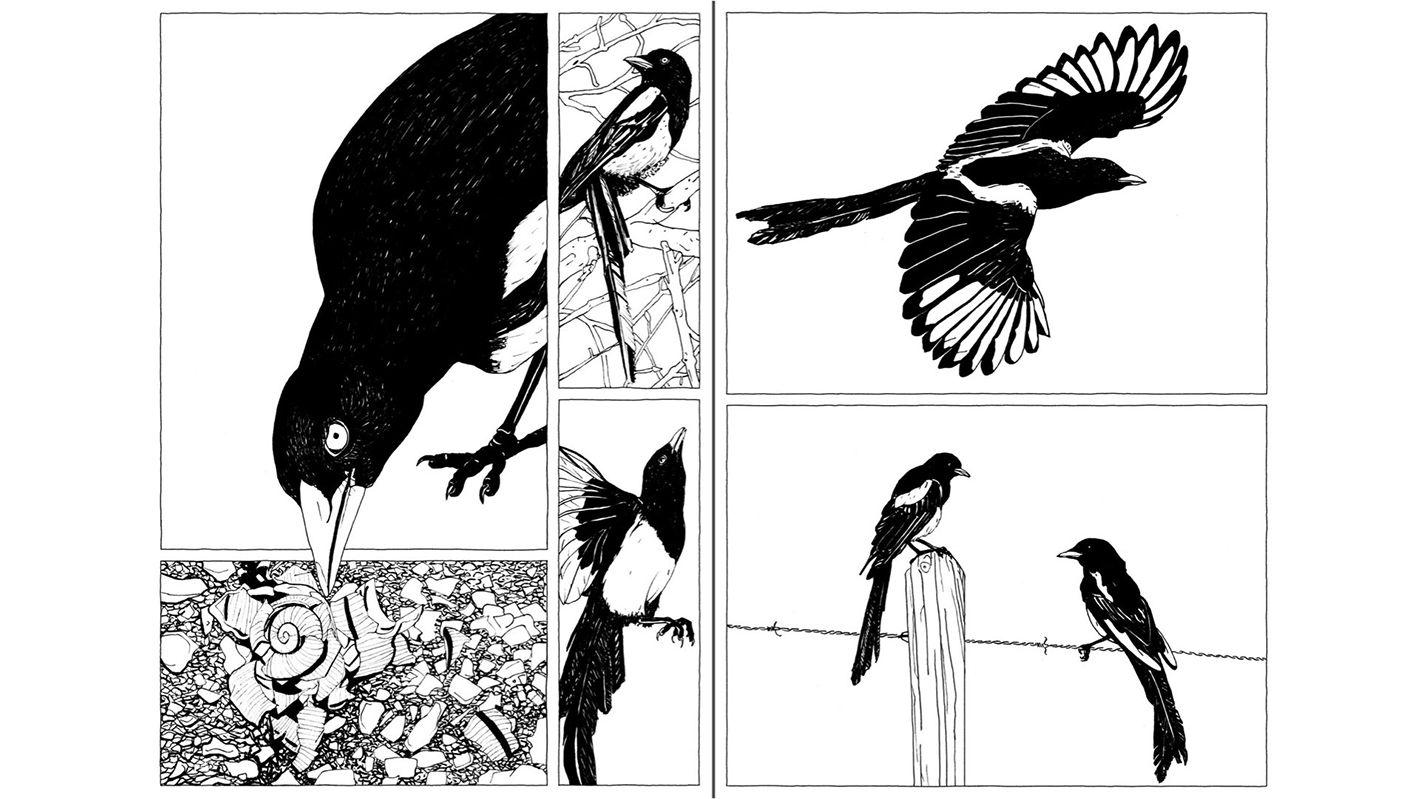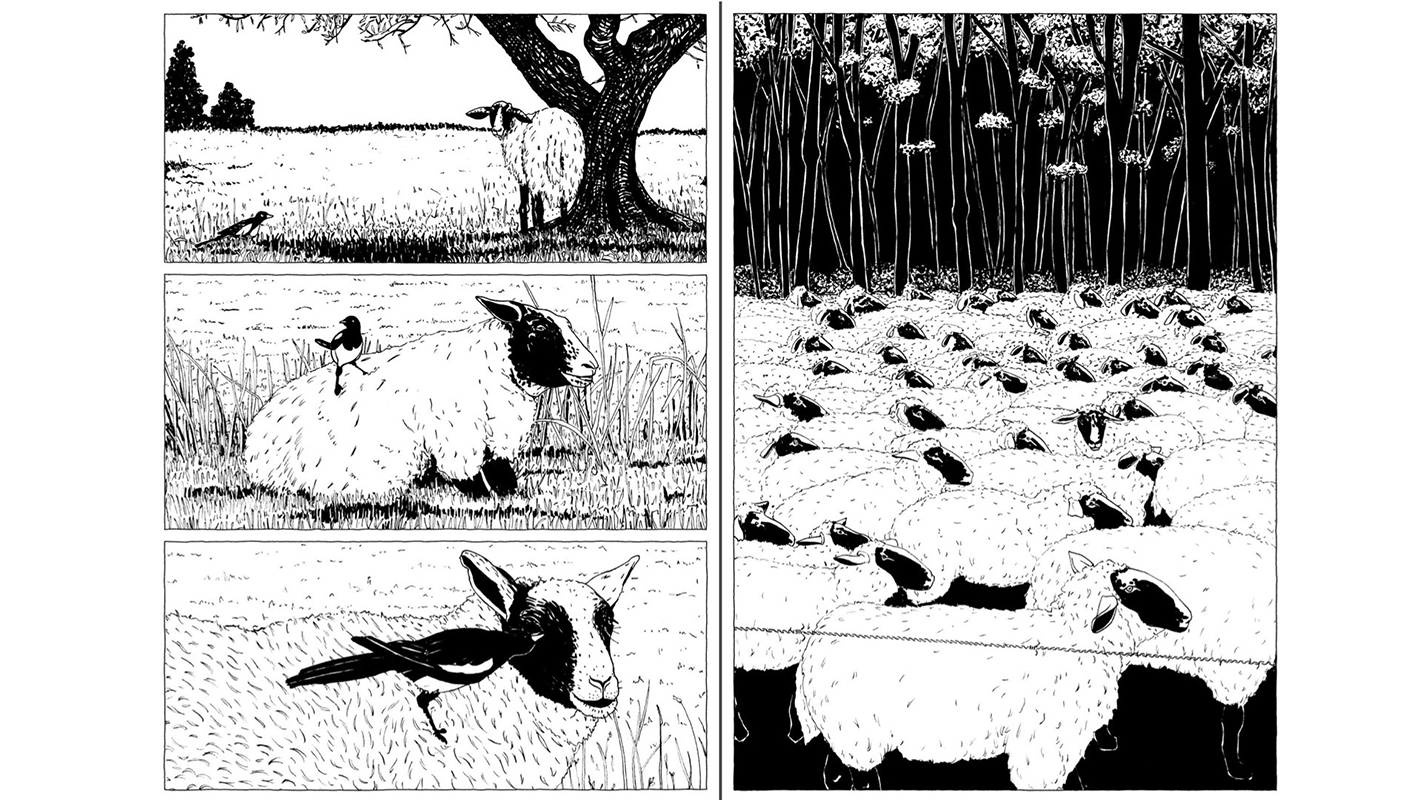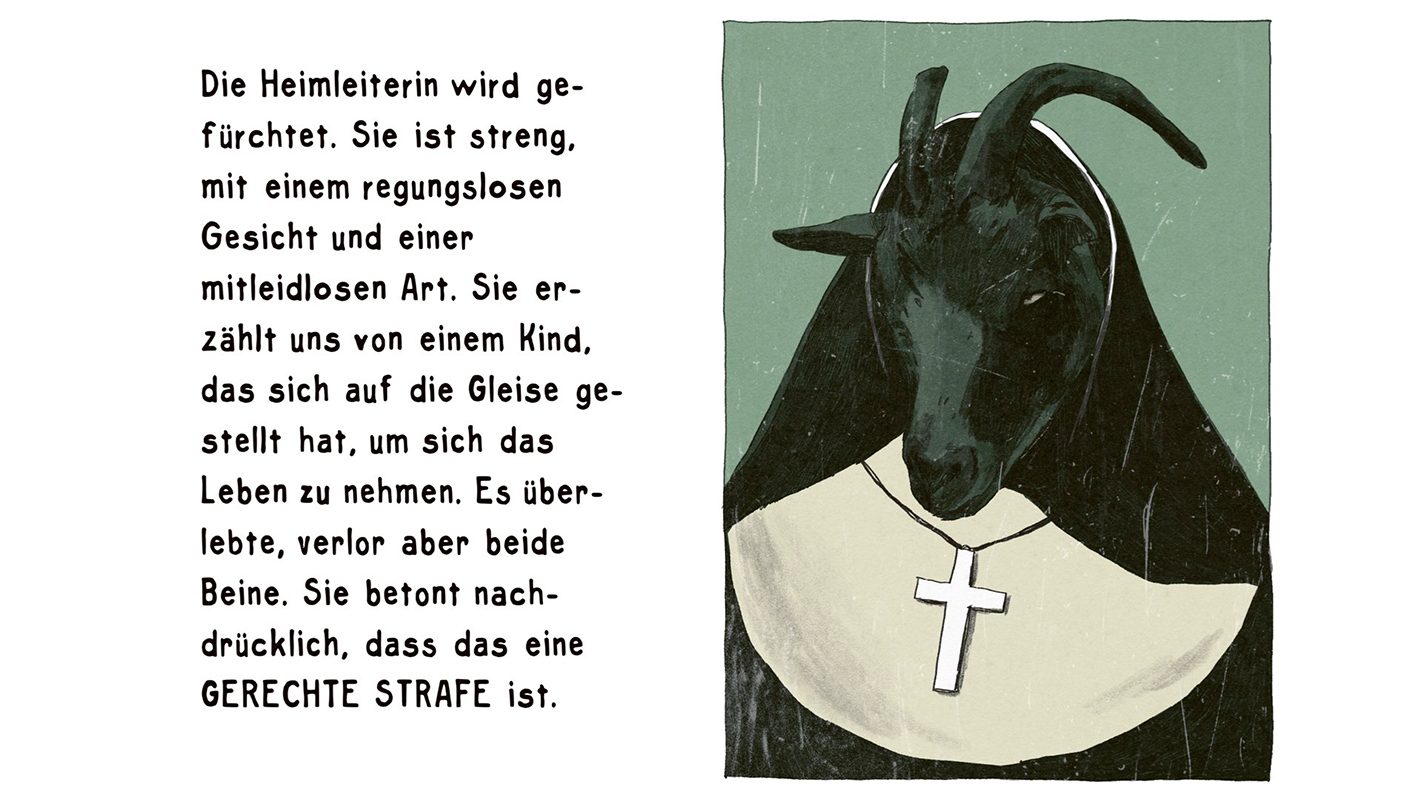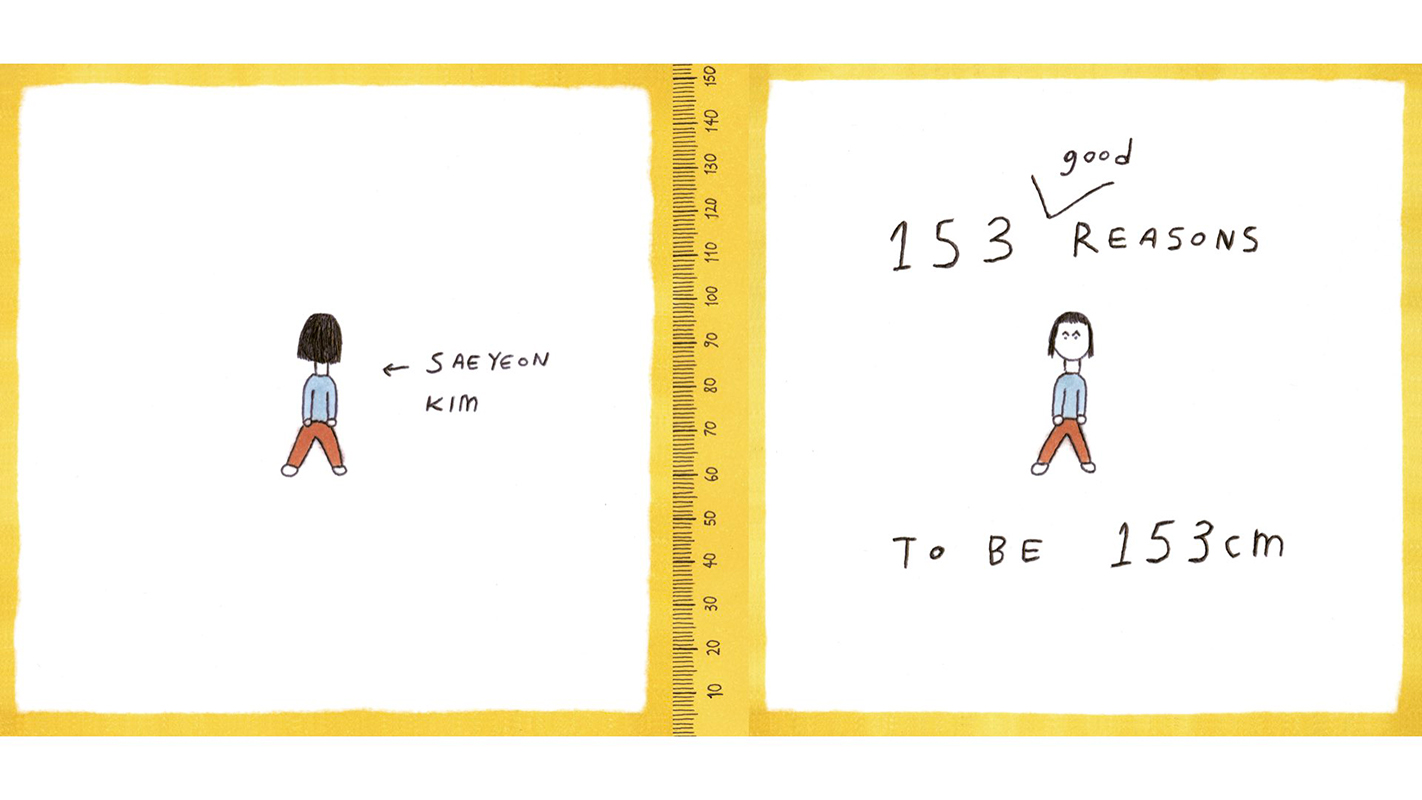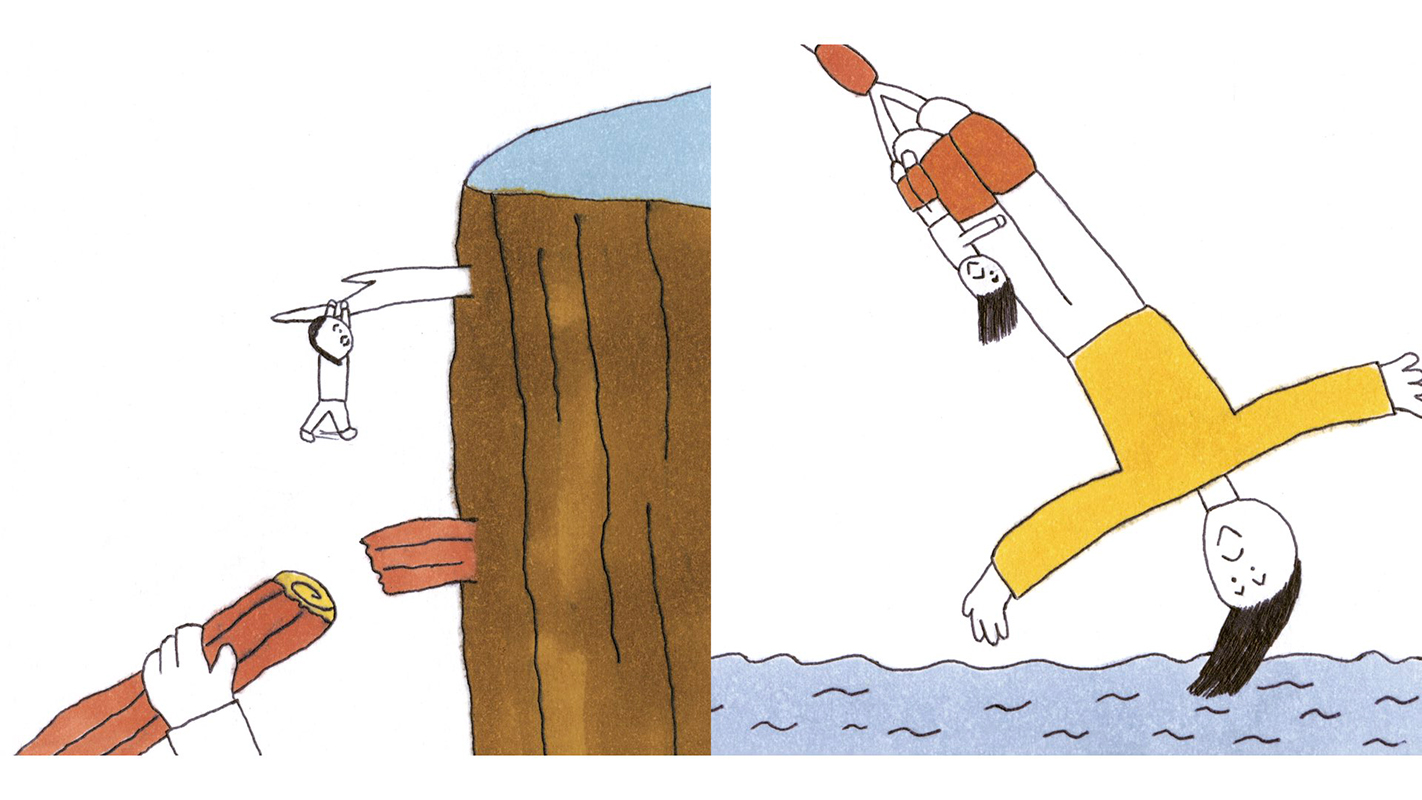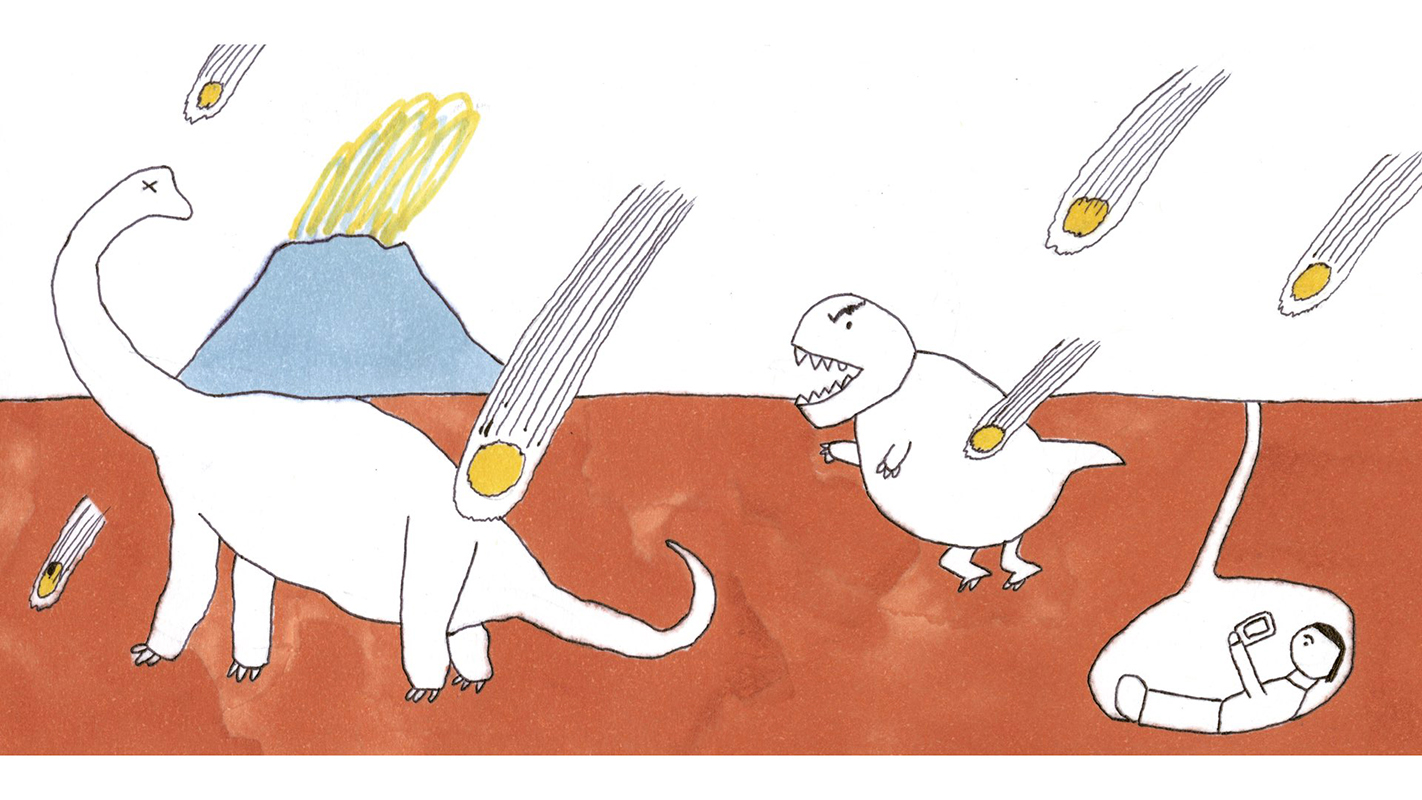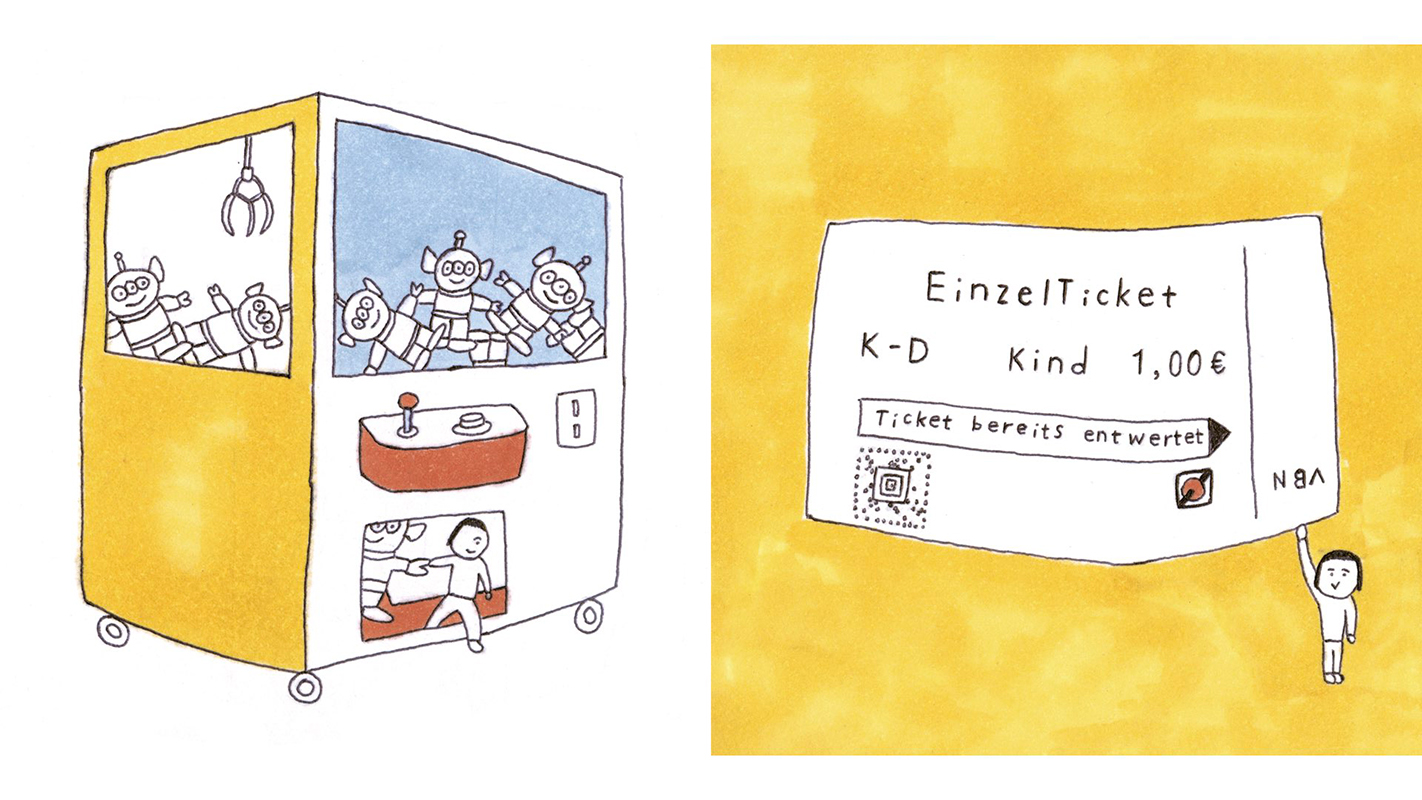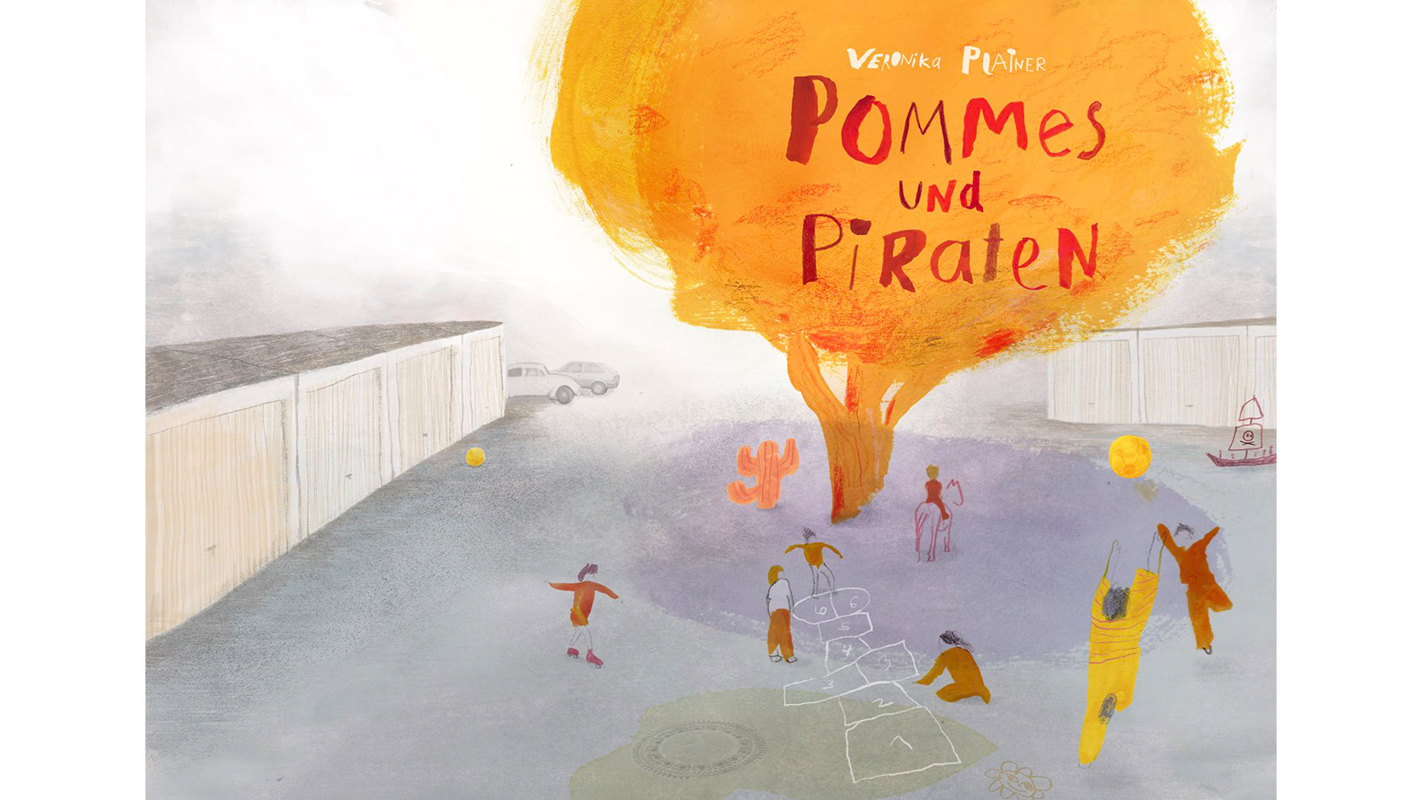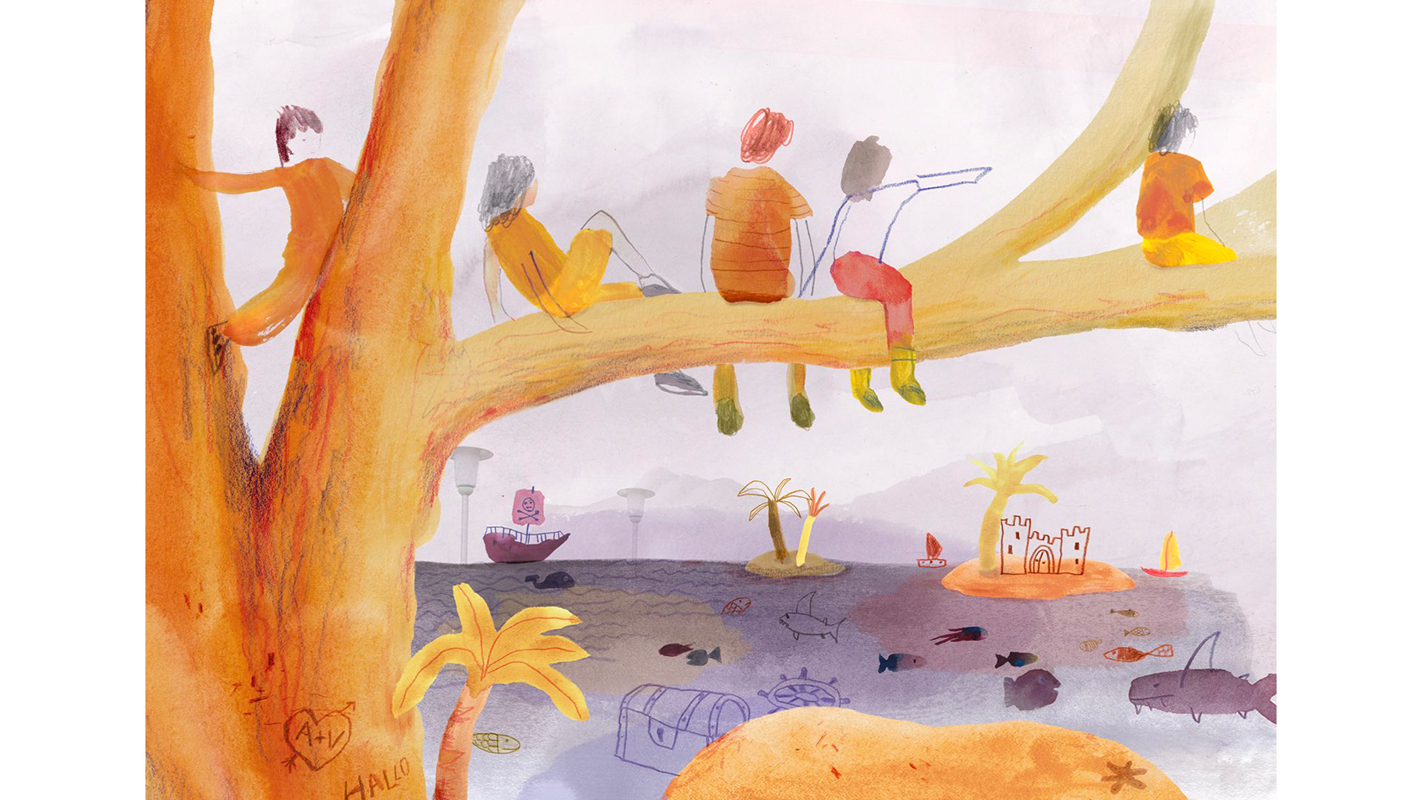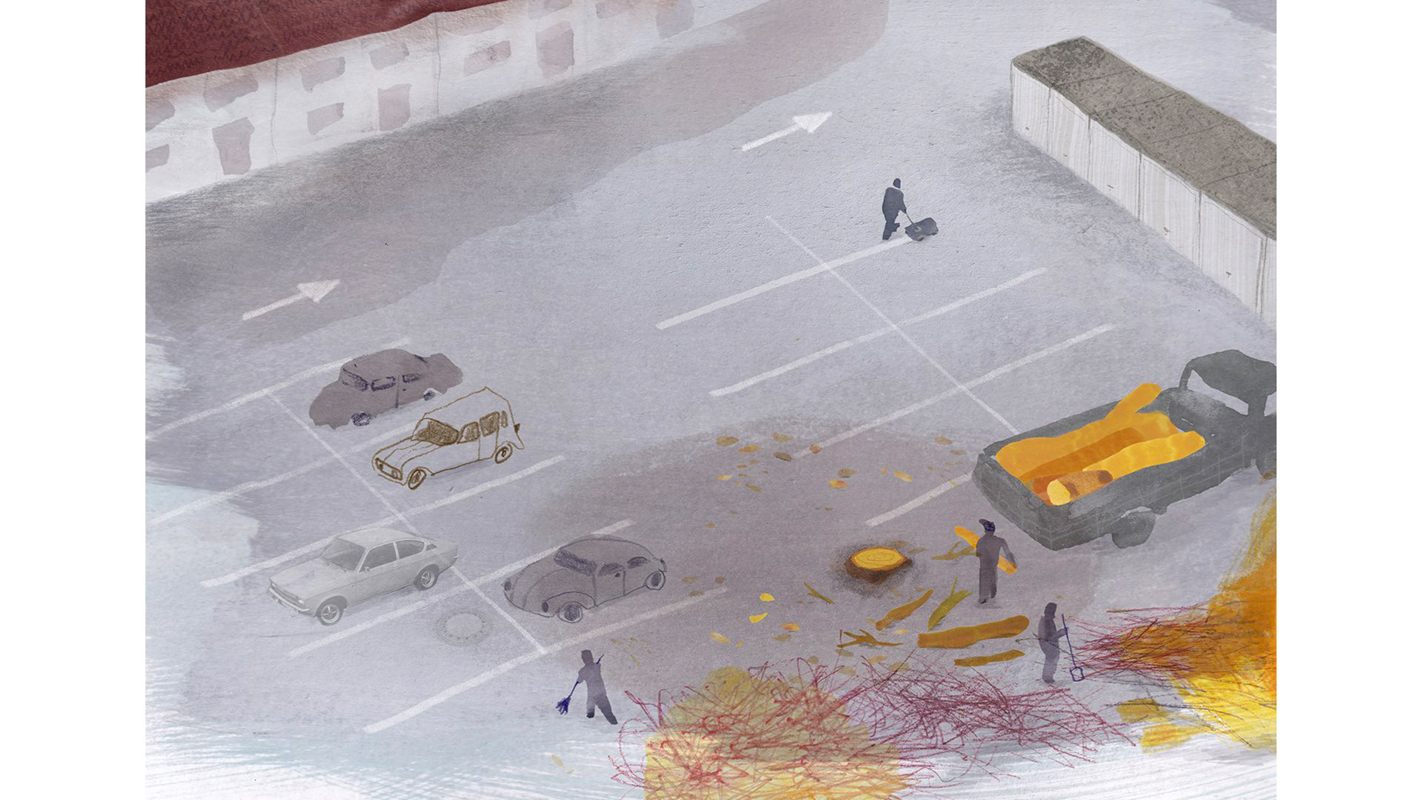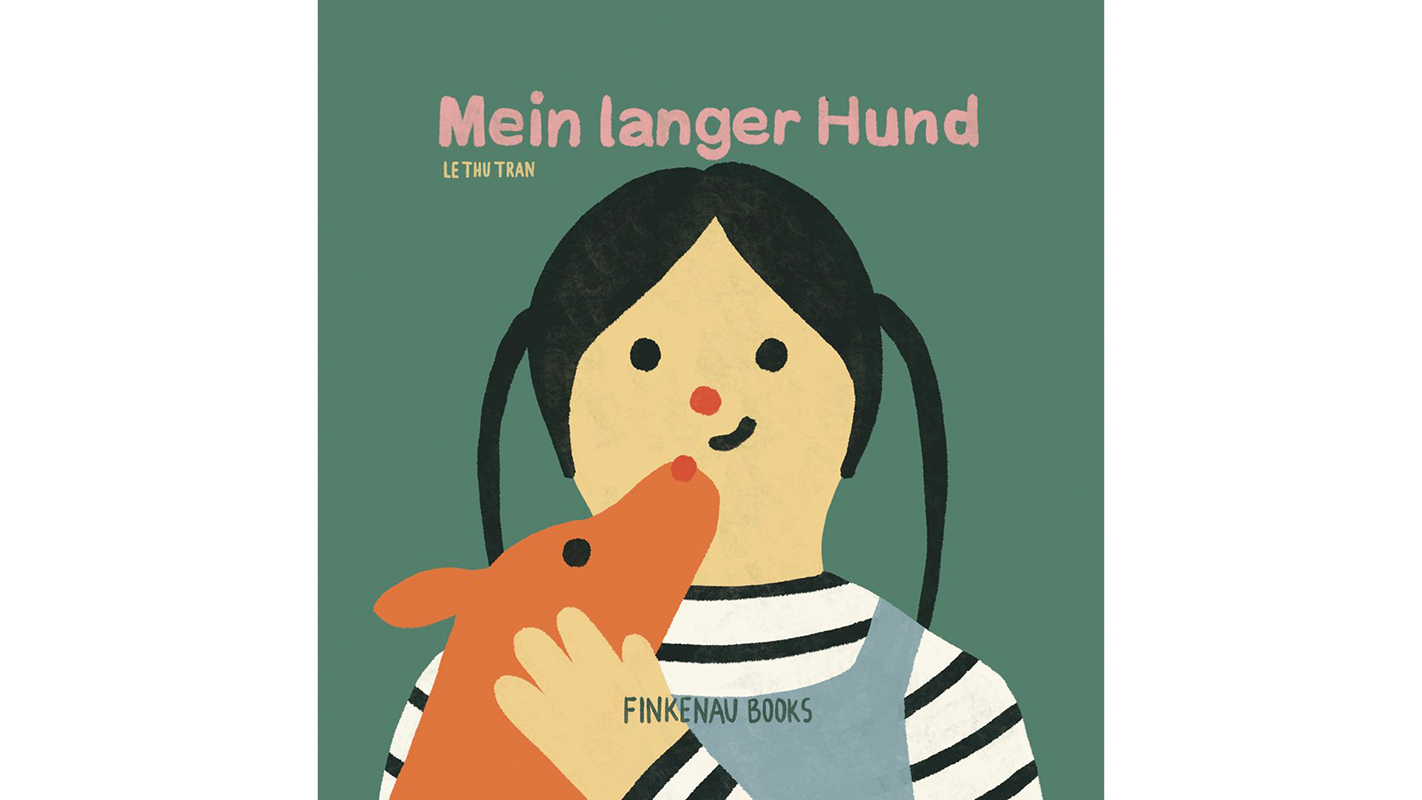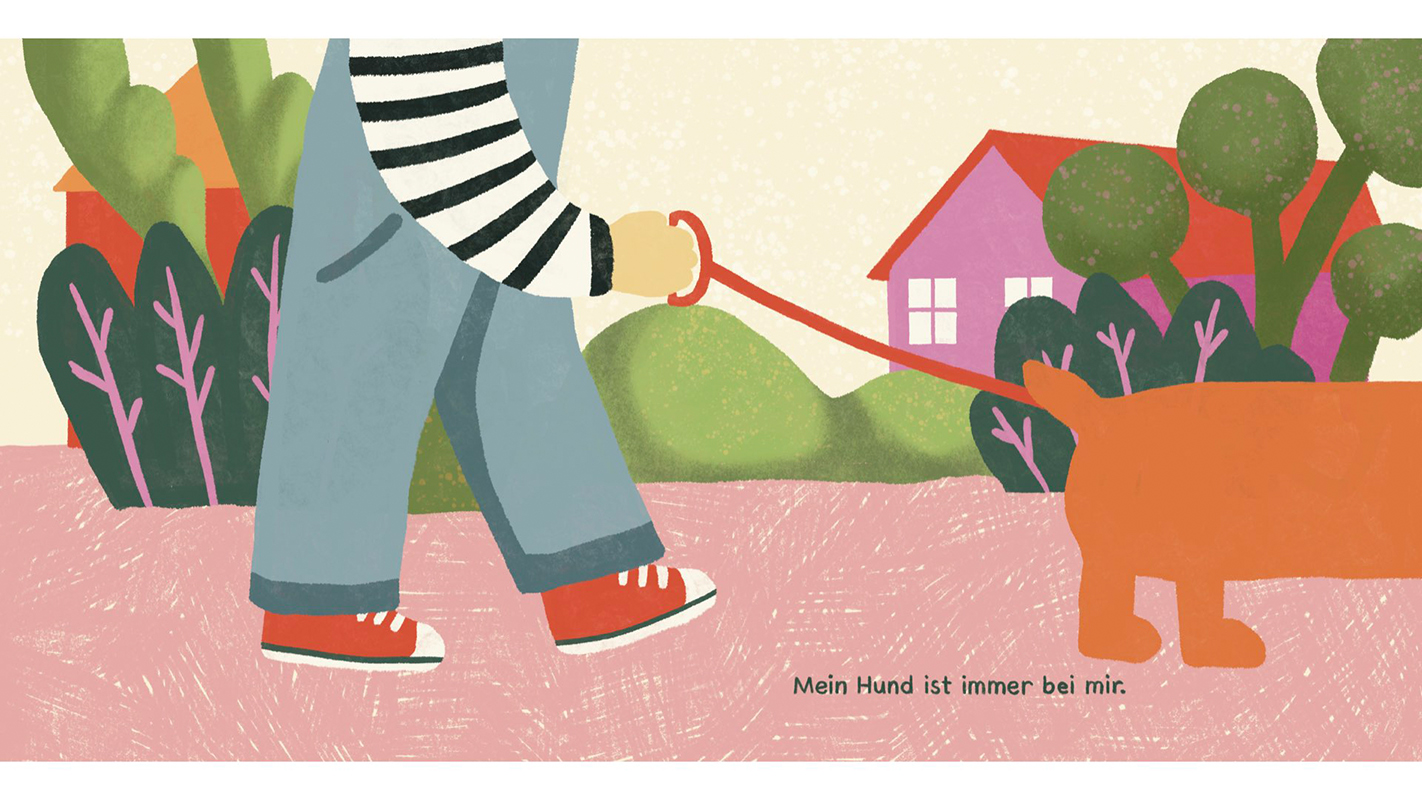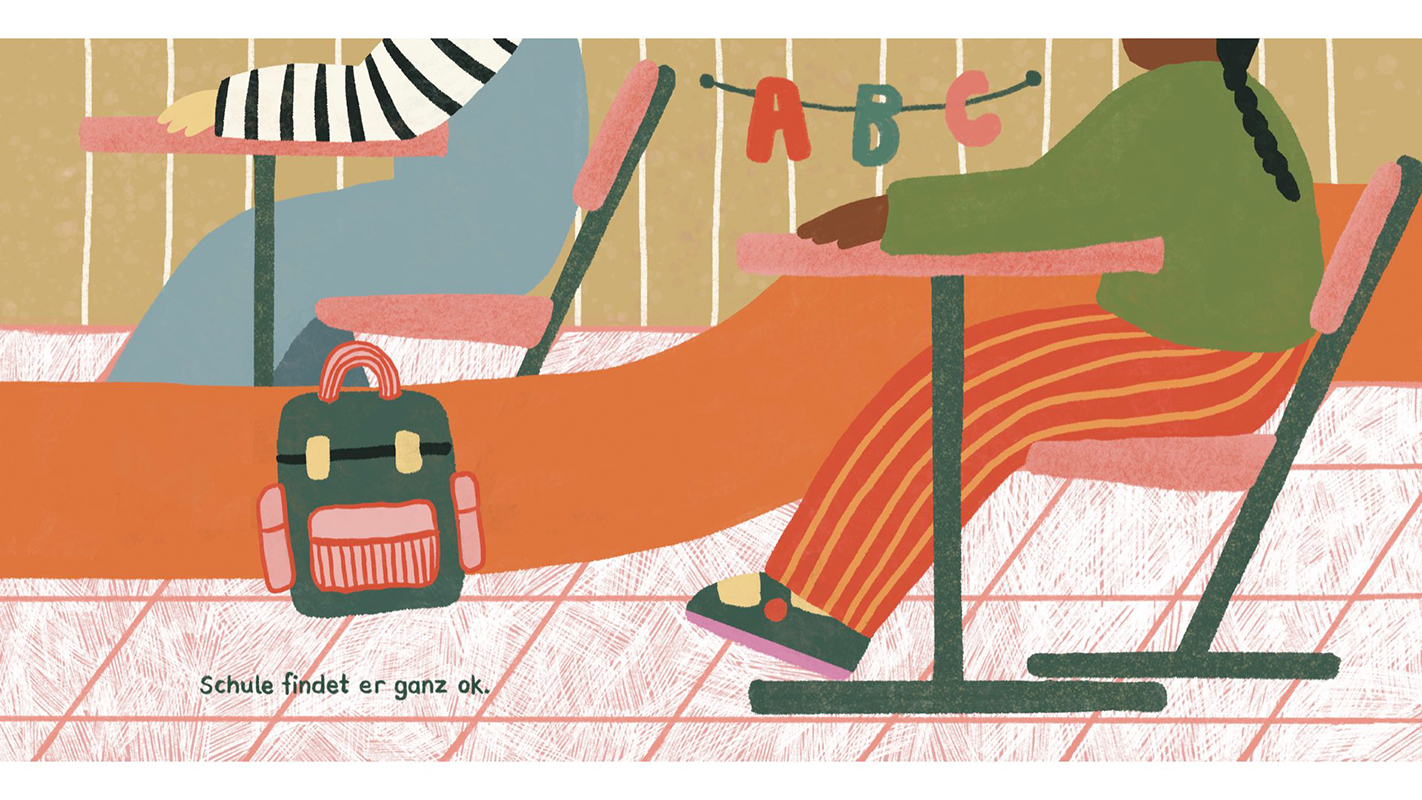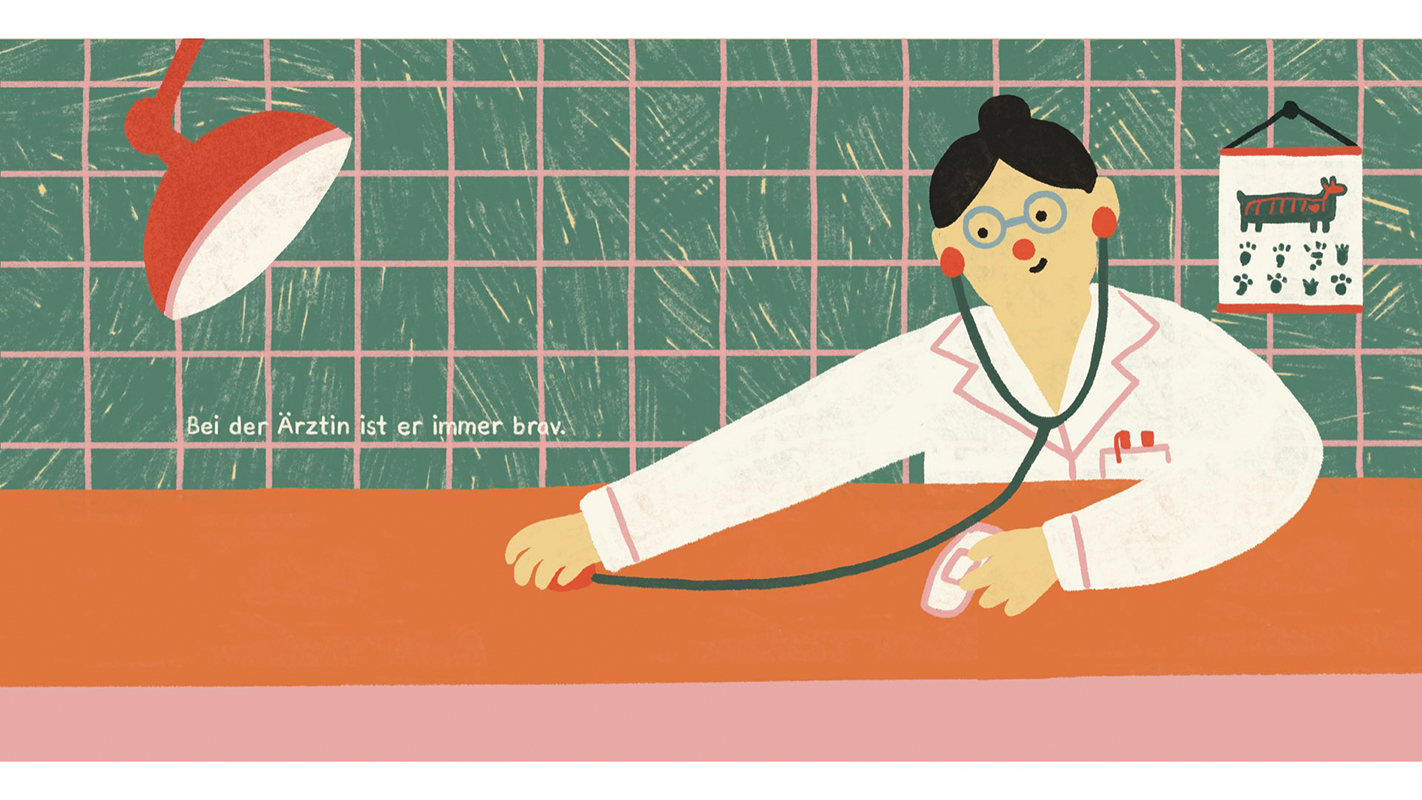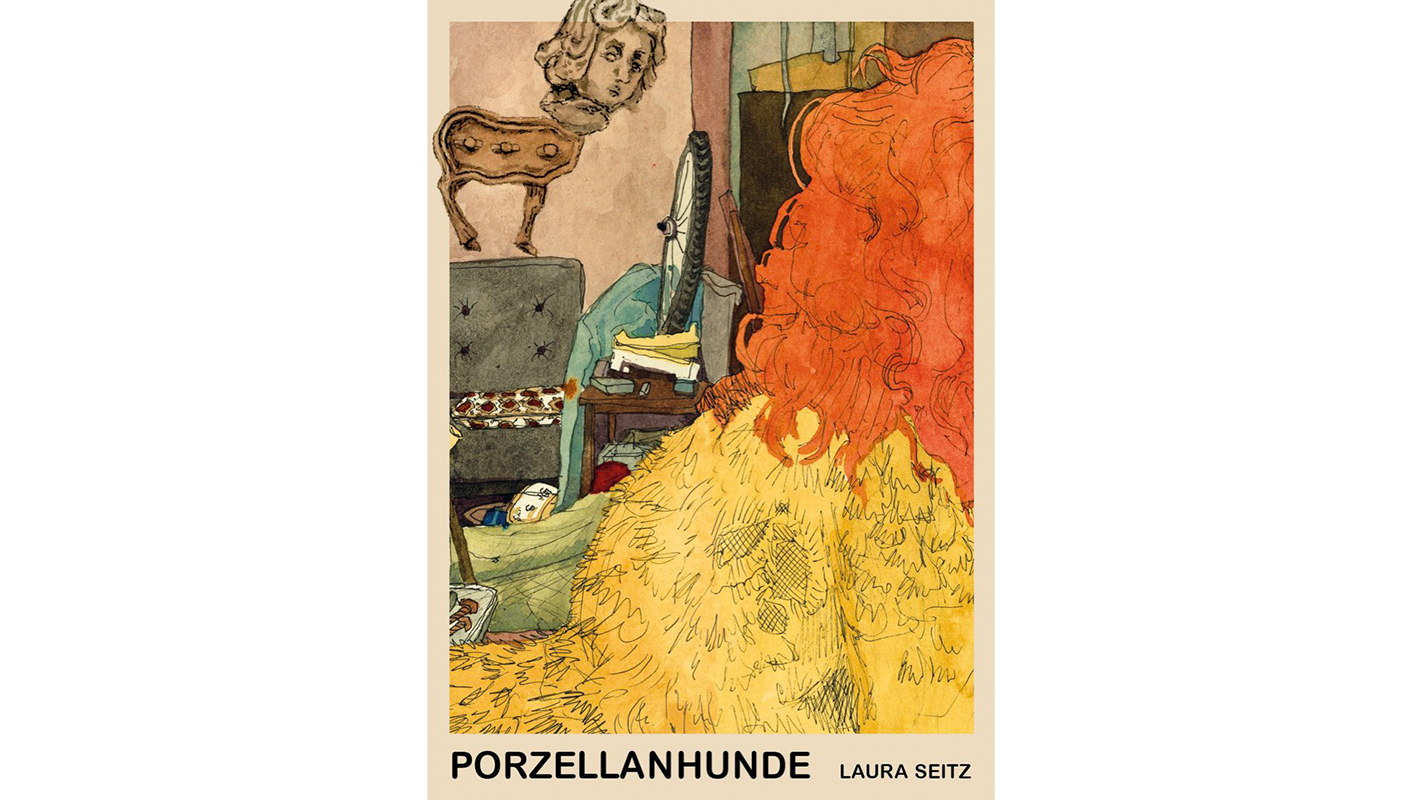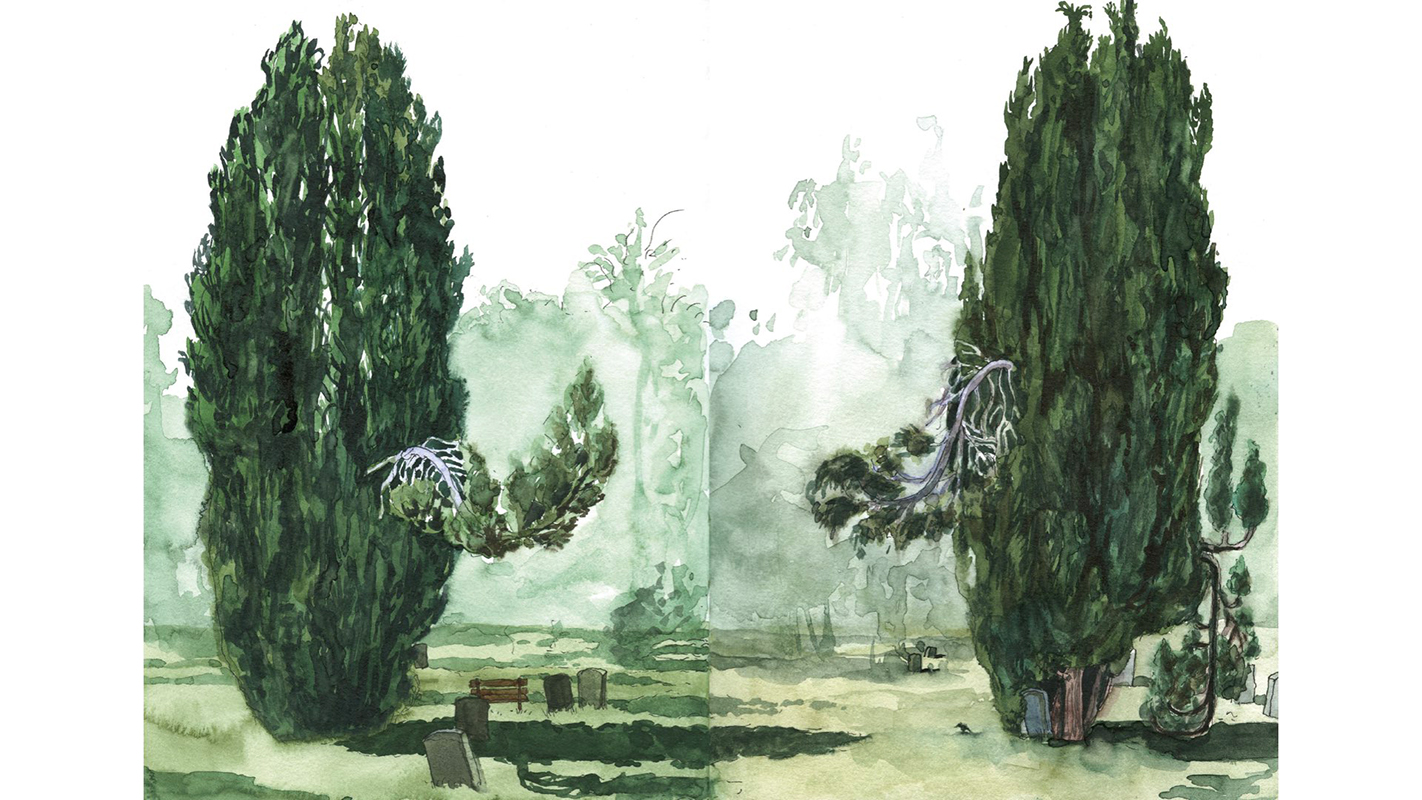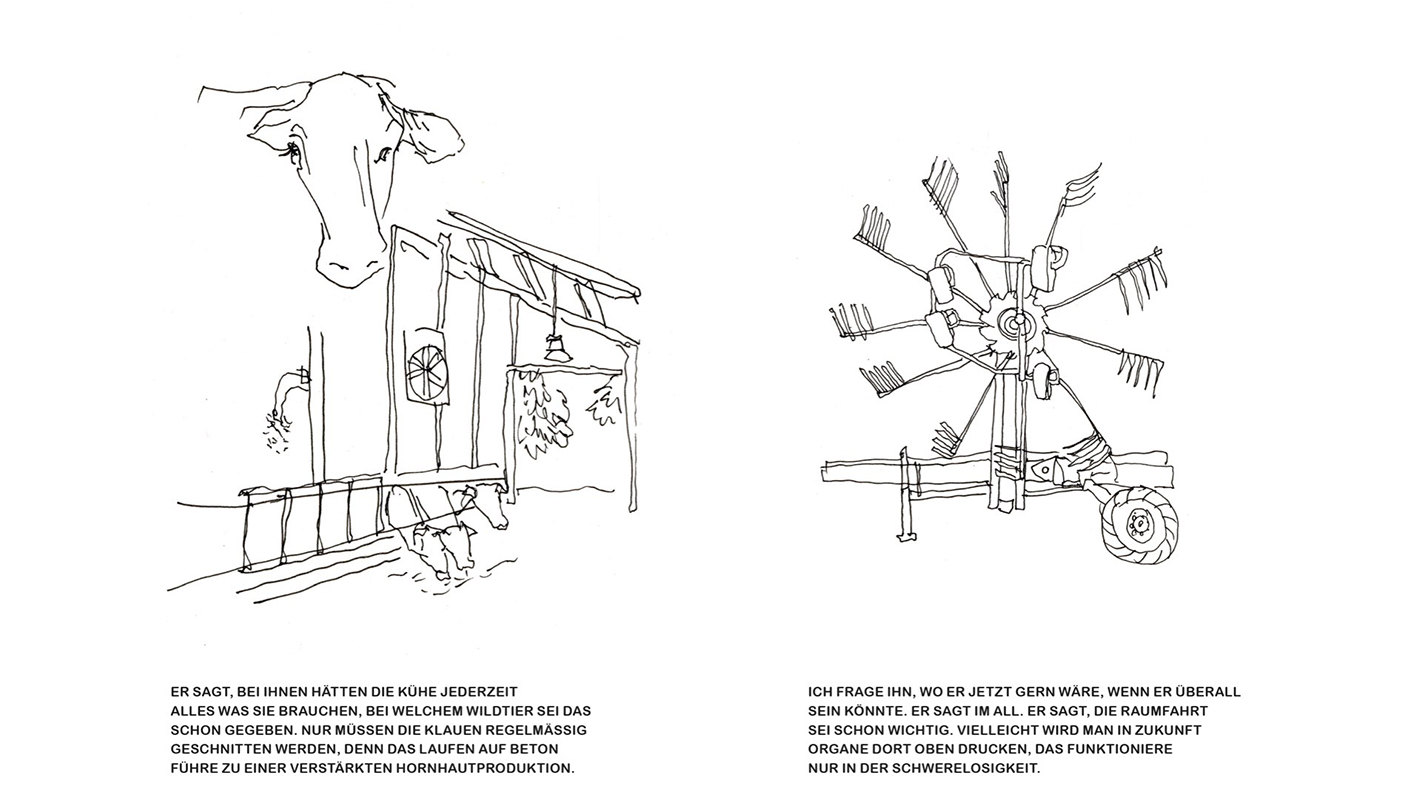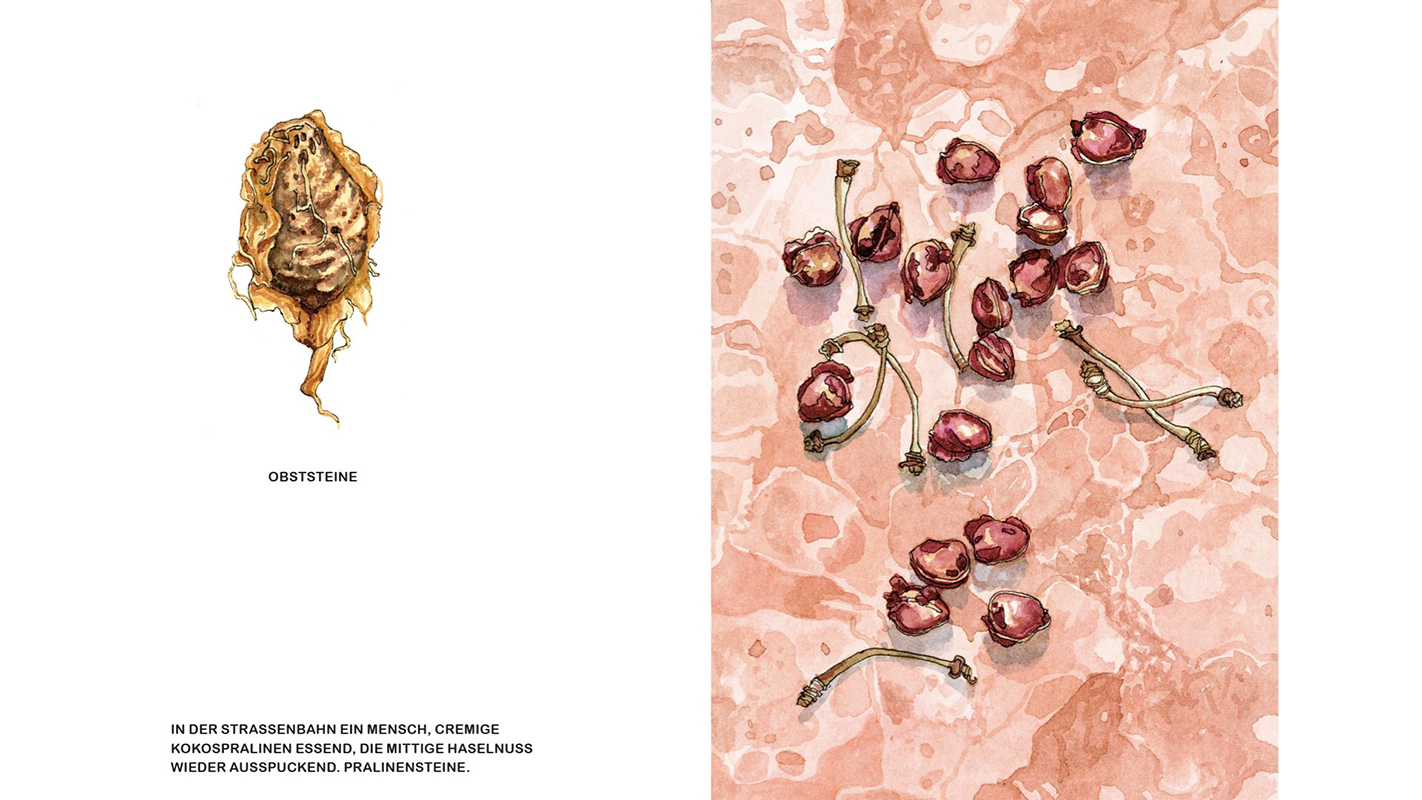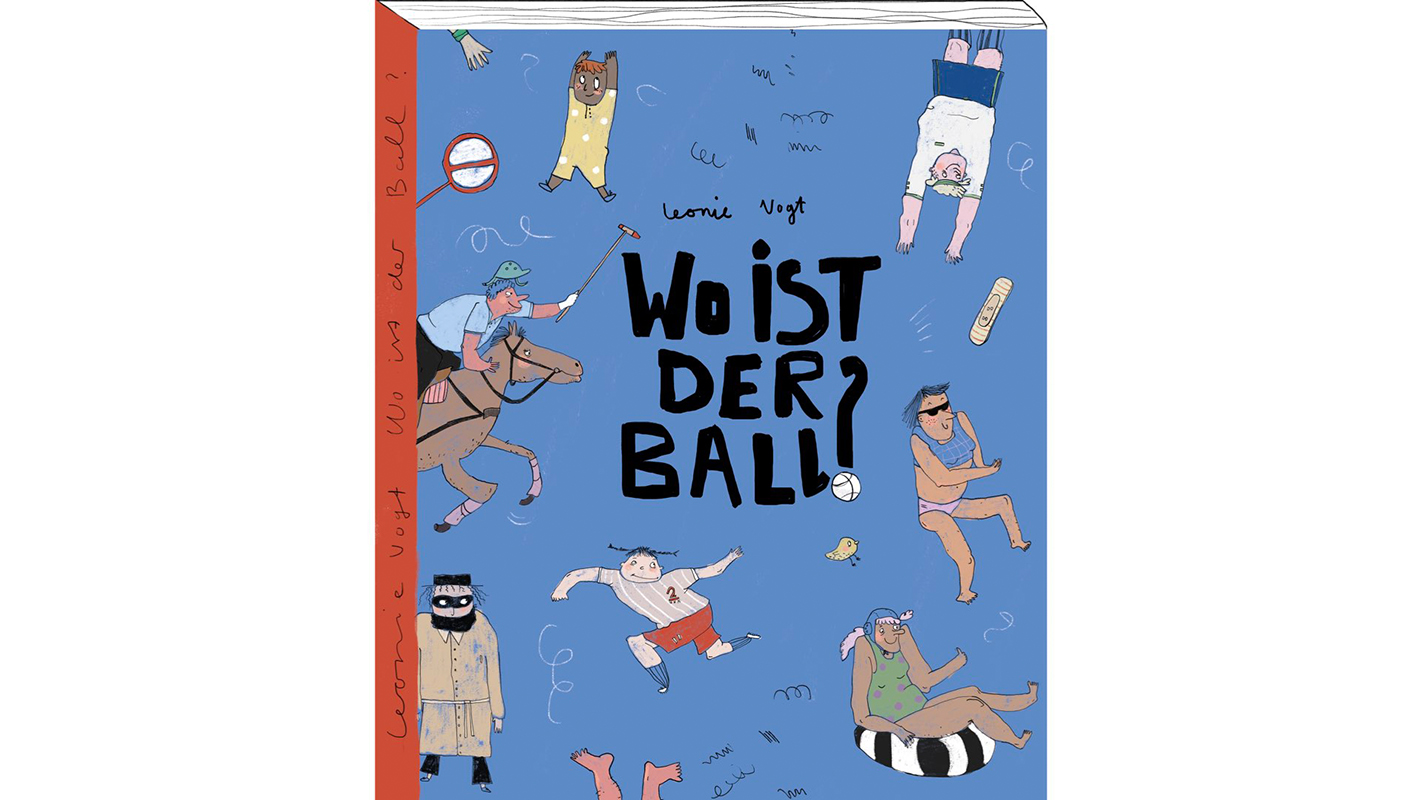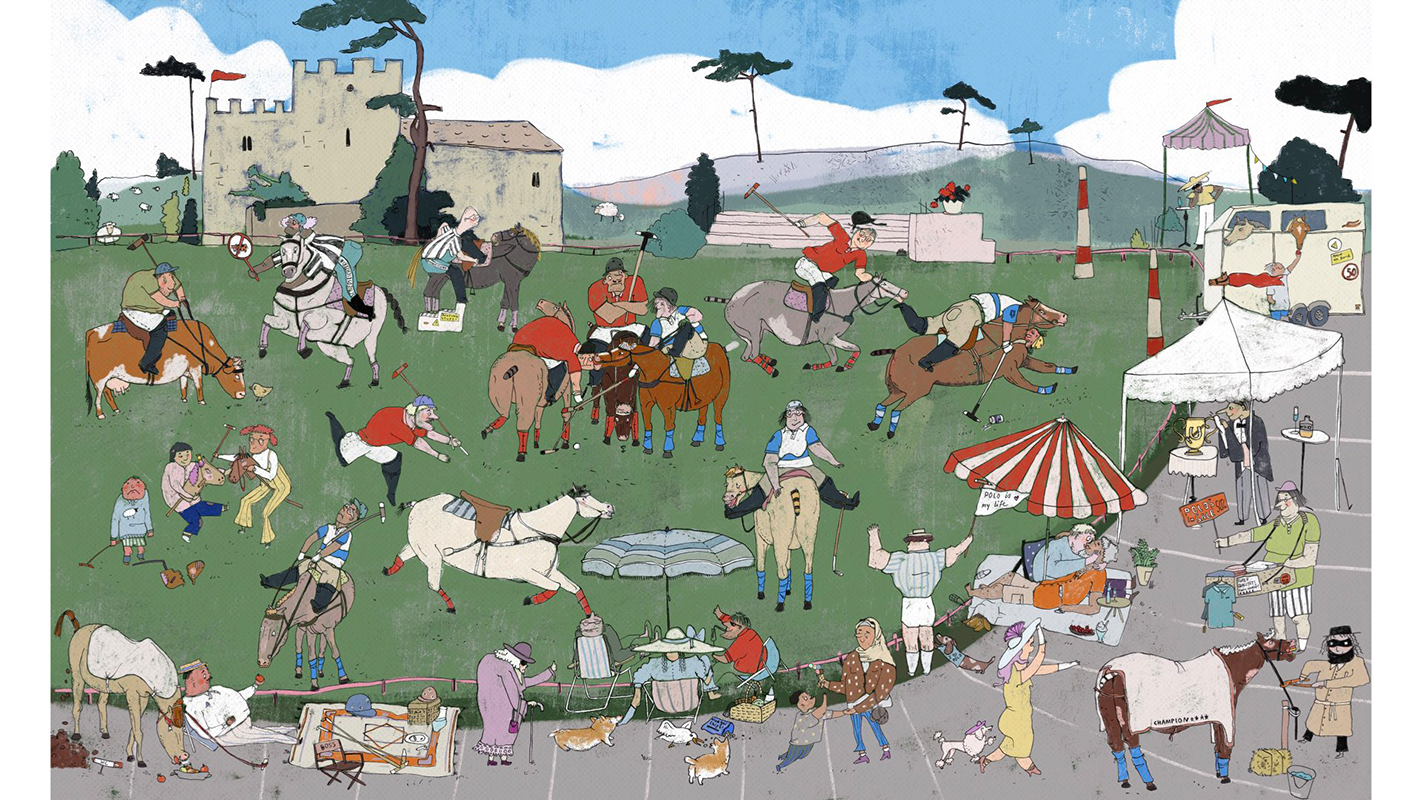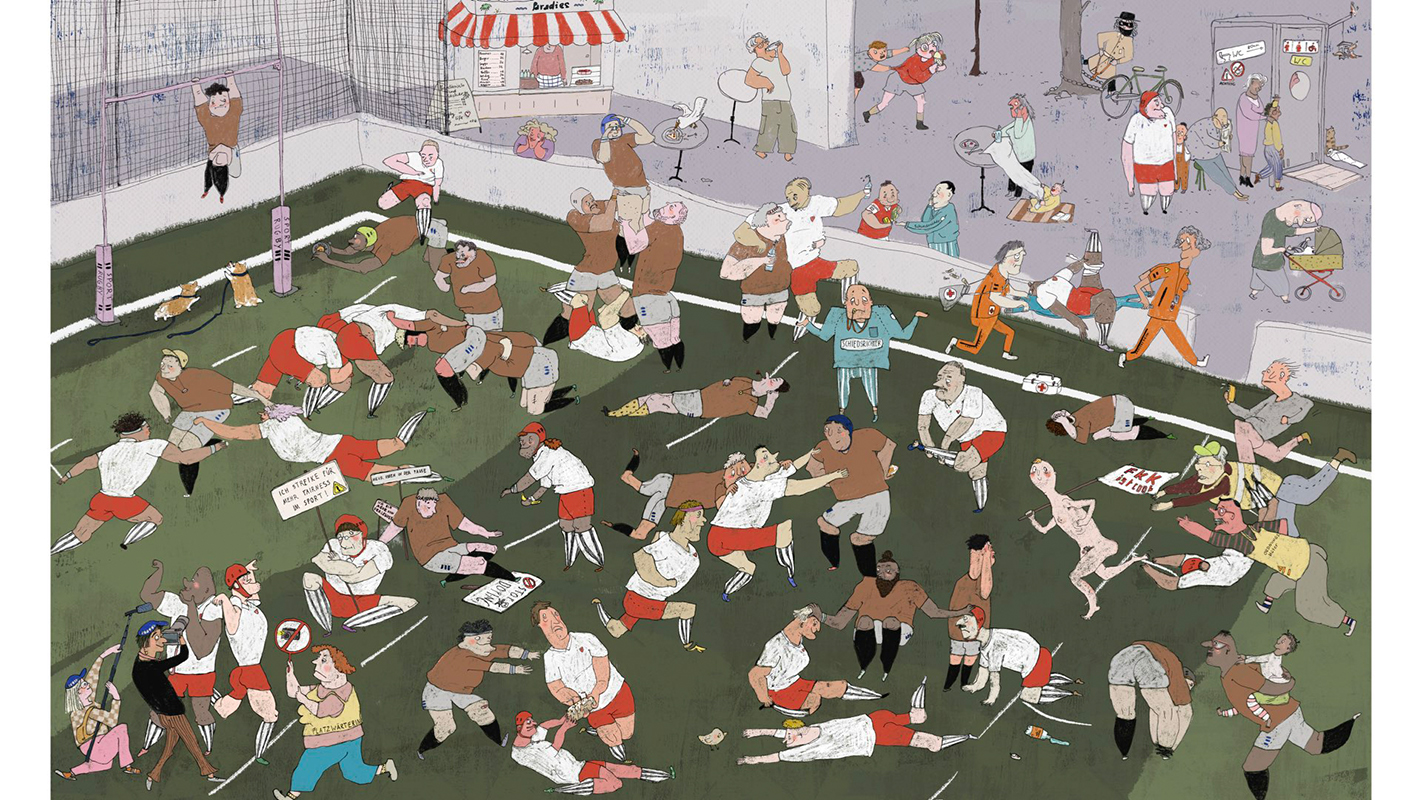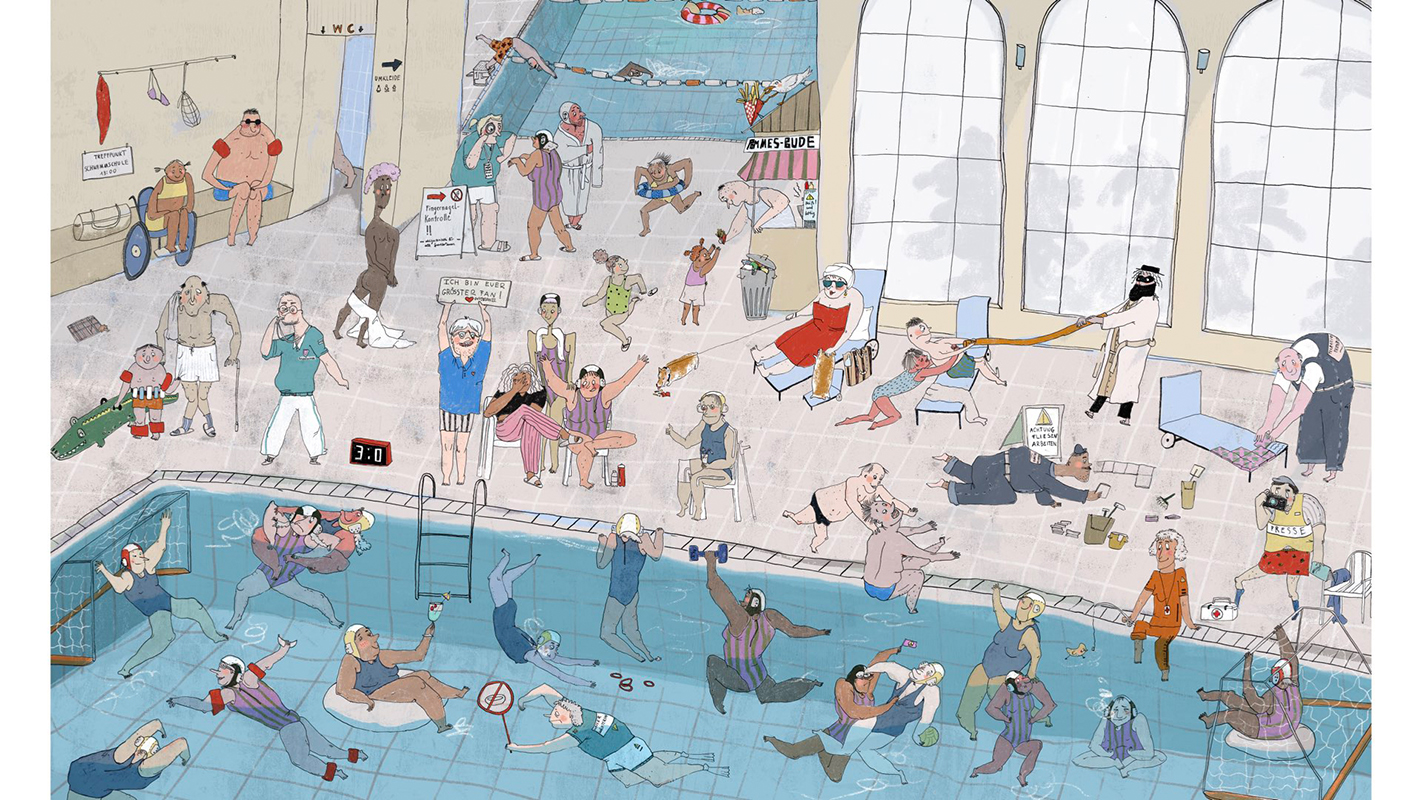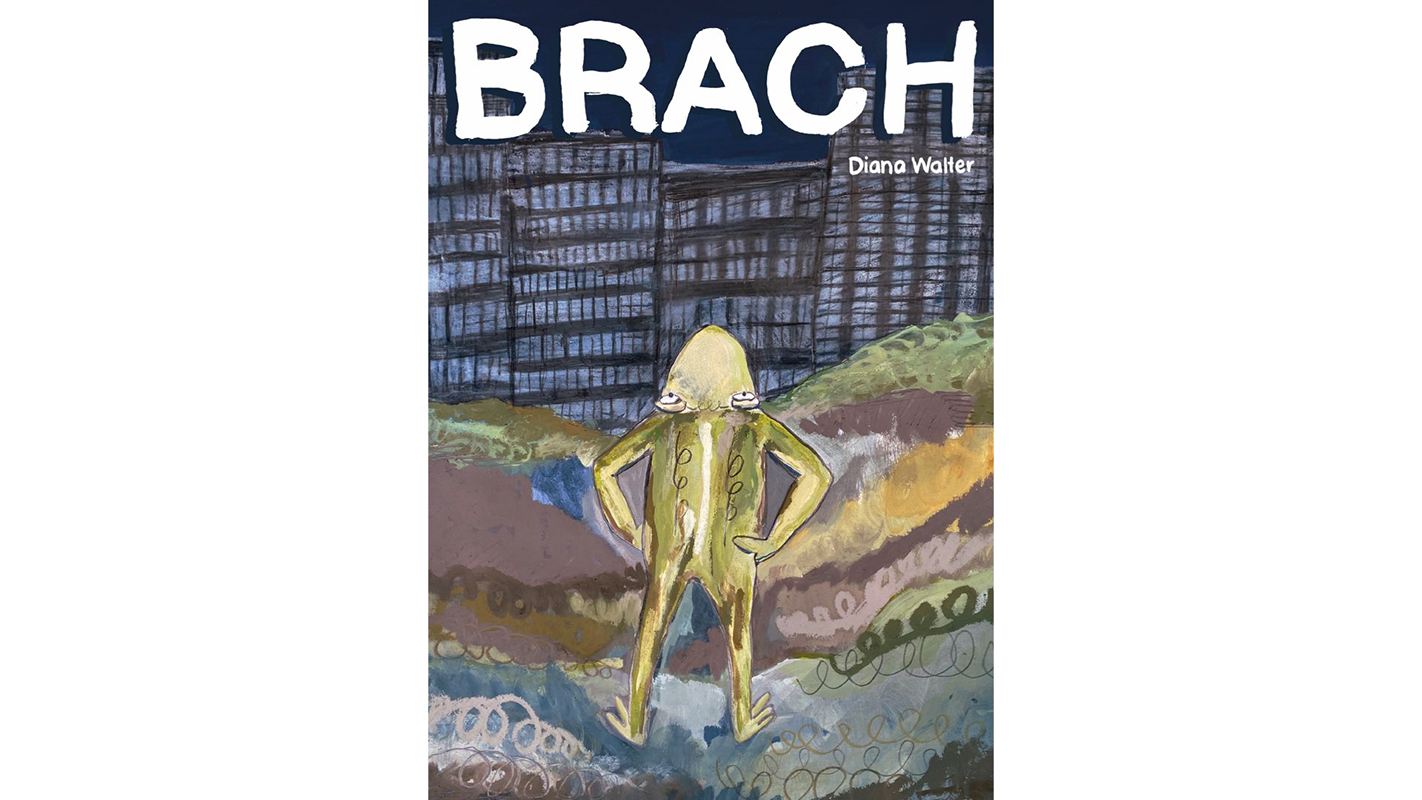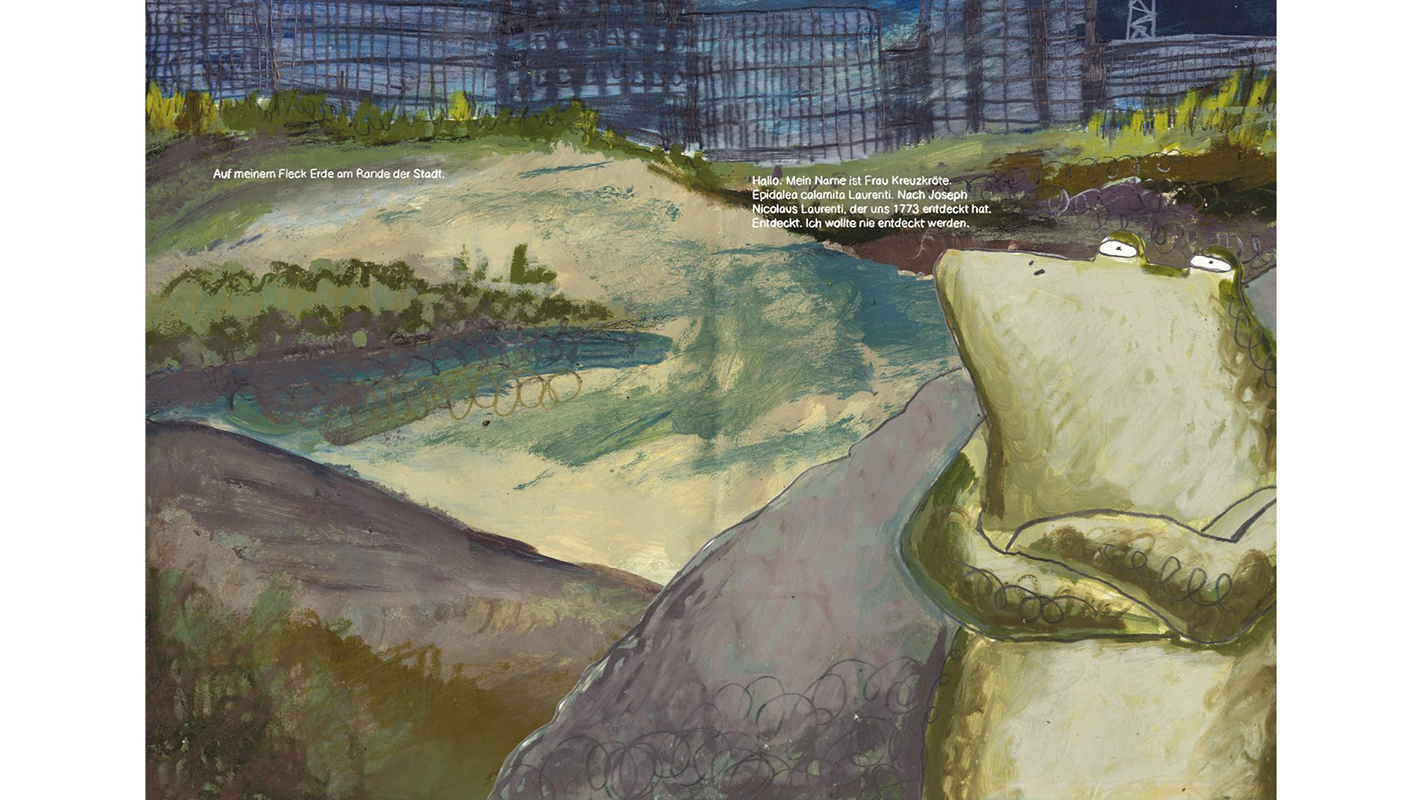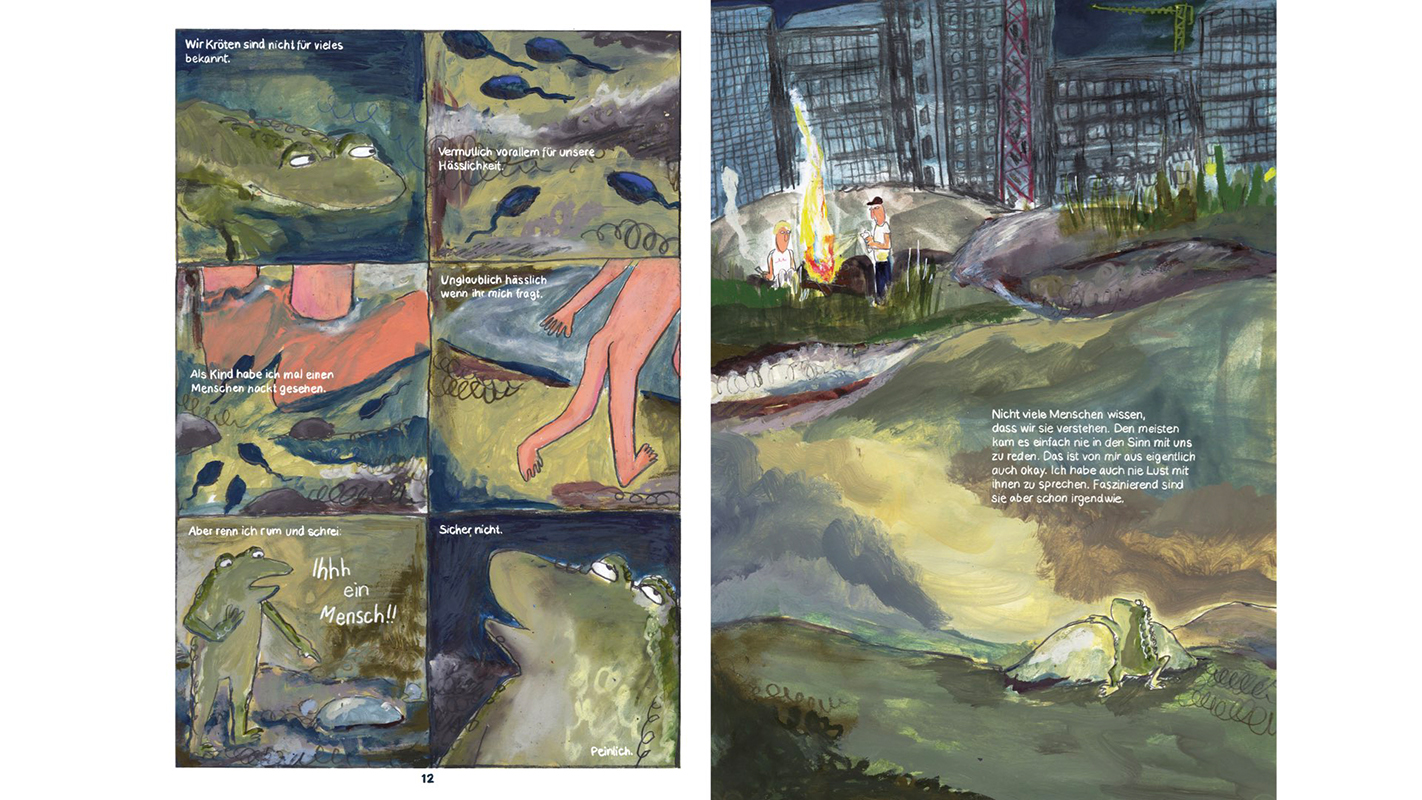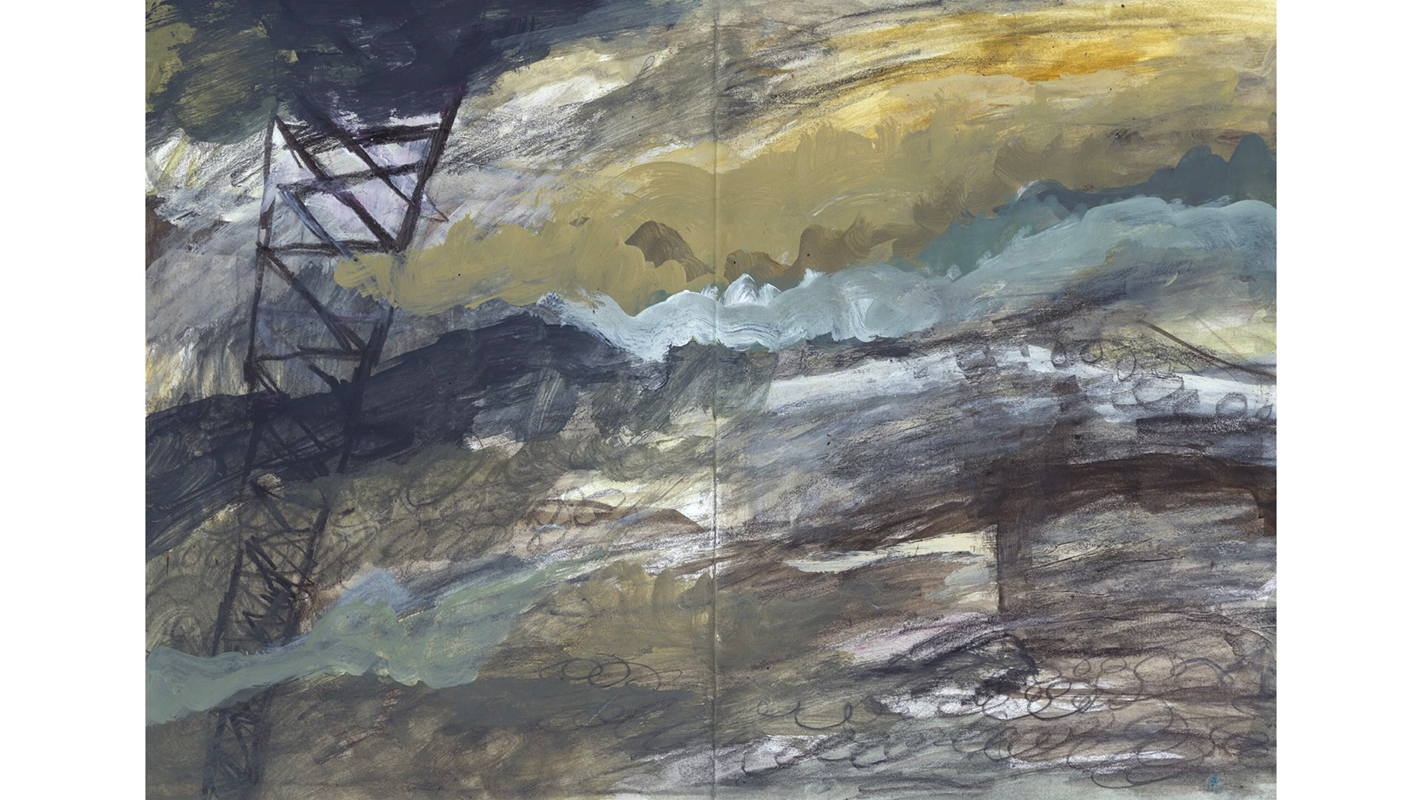Katrin Buksted: ALLER ANFANG IST KLEIN, Contact and jury statement
Katrin Buksted: ALLER ANFANG IST KLEIN
JURYTEXT: DR. MAREIKE STOLL
In this picture book, the delicacy of the drawn lines is the program. It tells of beginnings, of little things that grow. In a humorous yet profound way, some beginnings, such as the incipient mold in the bread box forgotten in the school satchel during the summer vacations, are combined with the weightier, larger beginnings of emerging human life during pregnancy and skillfully juxtaposed visually. The drawings masterfully hold this spectrum together and give the reader the space to find their own examples and images of beginnings, which ultimately do justice to the theme of responsibility outlined at the end, as it is hinted at here, in a multi-layered way. A seemingly light-footed book that has much more philosophical depth to offer than it suggests at first glance. For it is precisely the openness and lightness of the illustration that fits in perfectly with what this book is about: it encourages us to devote ourselves to the beginnings of our time with precisely this playful depth and, starting from this, to think about the bigger picture.
May Franzen: BETWEEN ANIMALS, Contact and jury statement
BETWEEN ANIMALS
JURYTEXT: PROF. MARTIN TOM DIECK
“Between Animals” presents us with a series of 25 comic-like, wordless double-page spreads depicting the interwoven lives and experiences of animals in habitats shaped by humans. Each double page shows an animal species that shares a habitat or habits with a preceding or following species in the page sequence. The man-made is omnipresent, but humans are not the focus. Each turn of the page results in a change of perspective. This opens up numerous other perspectives, and the one on people speaks of less amicable relationships. May Franzen calls her visual narrative style “graphic poetry”, and its sober black and white corresponds to a hauntingly unromantic and almost immersive panorama of the views of creatures from nature close to man. An unusual book that makes a lasting impression!
Charlotte Götze, ARMES HÄSCHEN BIST DU KRANK, Contact and jury statement
charlotte.goetze@web.de
ARMES HÄSCHEN BIST DU KRANK
JURYTEXT: DR. DAGMAR GAUSMANN
Charlotte Götze takes us on a journey into the past of one of the estimated 8-12 million “deported children” who were too often victims of a dark chapter of “black pedagogy” in the 1950s and into the 1990s.
Sent to convalescent homes for weeks on end in order to heal their bodies and souls, many of them suffered psychological and physical injuries that shaped the rest of their lives.
The narrator is one such child who, as we learn at the end of the book, which runs to at least 200 pages, only realizes in the fifth decade of her life, through therapy, why her life has felt so fundamentally wrong since she was “sent away”. We see this woman as a child traveling into her past. The world of the “Verschickungsheim” is depicted metaphorically throughout, with dense, jungle-like greenery growing from scene to scene, vegetation that is not soothing but rather devouring. The woman/child is always accompanied on this journey by a hare, sometimes a little bunny, sometimes a full-grown hare. Children’s songs and quotes from German educational material are given a creepy, leitmotif-like tone through their contextualization with the conditions in the homes.
“Armes Häschen, bist du krank” is a book that has been researched with dedication and illustrated with a vegetative proliferation that could possibly be called non-fiction; it is a book about how individual healing can become possible by facing up to one’s past. And pictures help! Charlotte Götze illustrates this here as a way of overcoming trauma, also for other people affected. That’s why Götze’s book is just right as an entry for a picture book prize.
Because the book unfolds its full force through pictures, strong and often cruel and evil pictures that threaten and harass the small, delicate children’s figures.
Charlotte Götze has already designed many of the book’s picture pages for her submission, digital collages and pictorial inventions that catch the eye and encourage the reader to read on and turn the pages. The reader is taken into the dark forest of memories, suffers with them, is afraid of the governesses, who were not only nuns, but all the “home parents” have goat heads with aggressive horns. The reader is soon frightened by this too, she is a small child herself and cannot believe what is unfolding before her eyes. A cold, almost sadistic world in which children were defencelessly at the mercy of the “educational measures”.
Can you read this? Can you look at it? Does it help? Does it heal? The jury members were divided for quite some time. But it does! In the end, yes! Because millions of children were “sent away”. And the number of unreported victims is high.
This project once again goes beyond the usual boundaries of the picture book genre. We would probably be more likely to imagine such a story as a graphic novel today.
What is a picture book? Among other things, it is a book in which pictures add another dimension to what is literally written. This is the case in Goetze’s project. Despite all the horror that is depicted, this book and, above all, its creative method of approach through collage also encourages readers to engage with their own individual past. This is perhaps better achieved on an associative “pictorial vehicle route” than in the sole search for the right words for the unspeakable.
With good editing and the courage to make cuts, this will be a book that not only gives a voice to those affected and educates the ignorant. This book also makes us think today as a society about how children live in our community and what their rights mean to us.
Saeyeon Kim: 153 GOOD REASONS TO BE 153 CM, Contact and jury statement
saeyeonkim96@gmail.com
Saeyeon Kim: 153 GOOD REASONS TO BE 153 CM
JURYTEXT: ELSA KLEVER
“153 good reasons to be 153cm” or “many good reasons to be short” is a creative and humorous collection of the many advantages of being shorter than everyone else.
The 153cm should not be taken too seriously, as the whole thing is taken to the extreme by illustrator Saeyeon Kim.
Not only do you need less body lotion than everyone else, but you can also make yourself comfortable in a kangaroo pouch, fly with a dandelion seed or use a toilet paper sheet as a blanket. Saeyeon Kim’s drawings (and texts) are simple in the best sense of the word, charmingly naive and, above all, very funny. Minimally colored line drawings and simple figures that are reduced to the essentials: Often there are only eyes and eyebrows, sometimes mouths too, if they play a role.
The illustrator, who is 153 cm tall herself, dedicated the book to her father, Brunder and best friend, who are all over 1.80 m tall. Her father often asked her: “What did you do when the others grew?” She says “I grew too, just a bit slower” and there are obviously many good reasons for this.
The numerous advantages of being small are illustrated in this booklet in a creative, humorous and playful way and make you want to keep turning the pages.
Veronika Plainer: POMMES UND PIRATEN, Contact and jury statement
veronika.plainer@gmail.com
Veronika Plainer: POMMES UND PIRATEN
JURYTEXT: PROF: MARTIN TOM DIECK
A children’s book as a reminder of saying goodbye to childhood is a special undertaking. In what illustrator Veronika Plainer shows in this book project, the special, personal memories are a layer of what we see. In the motifs, we also see facets of carefree experience that can be felt beyond the individual. In them, temporality itself and the subjective nature of memory find visual expression through various contrasts. In each picture, a warm orange glows out of different shades of grey, two-dimensional representations are combined with linear ones and suggest fragile realities. Surfaces dissolve like fading memories, and through the painterly layers, photographic elements suggest a factuality that pushes its way into the reality of what is perceived. But instead of mere melancholy, the loose and skillful use of means in this small visual marvel allows us to recognize the interpenetration of experience, feeling and memory, which distinguishes us all as a special sphere of inner presence!
Le Thu Tran: MEIN LANGER HUND, Contact and jury statement
l.t.tran1993@gmail.com
MEIN LANGER HUND
JURYTEXT: DR. MAREIKE STOL
Le Thu Trans’s book “My long dog” enchants with its consistently shaped idea. A fanfold of considerable length unfolds picture by picture and celebrates the eponymous long dog as a wonderful playmate in many situations: on walks and cuddles, playing hide-and-seek and swimming in the lake, to name but a few. The really very long dog moves light-footedly through the folding book, as it folds up between the book covers like an accordion and becomes a space miracle in the book. The fanfold accentuates the visual transitions from page to page in a playful and clever way. Children of different ages will immediately make the connection between the head, middle and hindquarters and understand it as a dog – while some adults will no doubt only see an abstract line at first glance, which becomes a long dog if they devote a little more attention to the book. And you should definitely give it that! The book combines a bold format with a simple idea, but the colors and the wit in the implementation make it a magical little picture book that invites us to reflect on what we see at first or only at second glance.
.
Laura Seitz: PORZELLANHUNDE, Contact and jury statement
hello@lauraseitz.art
PORZELLANHUNDE
JURYTEXT: PROF. DR. TOBIAS KURWINKEL
Bohemian strolling was a cultural and social practice in the 19th century; the décadents and dandies wandered aimlessly through the (big) cities in search of sensations. Any detail could attract their attention, become the object of their observation and thus a reason to lose themselves in the urban atmosphere.
“Completely outside of any intention and without a thought,” Marcel Proust congenially writes in In Search of Lost Time, “I suddenly felt […] my attention caught by a roof, a reflection of the sun on a stone, the smell of a path.”
Laura Seitz’s picture book Porcelain Dogs is reminiscent of what Proust describes, of the practice of flânerie, of precise, subtle observation in urban spaces. In her book, she portrays “true incidents from everyday life” in pictures and words: fruit stones, the dried tendrils of a climbing plant on a fence, a suitcase opened like a book that, left to its own devices, merges more and more with nature. It is the small things that Seitz “have somehow moved in different temperatures”, which she is convinced “have a certain strangeness about them”. She captures the “events” of the Elbe city in beautiful watercolors and lyrical sentences over the course of a “summer of exploration”. In doing so, she succeeds in creating a connection between her inner self and the city’s exterior and depicting it in her book: Her linguistic reflections put the naturalistically painted finds into perspective in their own special way, seeming to animate the inanimate – and vice versa.
Laura Seitz’s picture book is a call to look, an appeal to celebrate the beauty of the small rather than the large – and a picture book homage to Hamburg.
Leonie Vogt: WO IST DER BALL?, Contact and jury statement
leonie.vogt@outlook.com
WO IST DER BALL?
JURYTEXT: ANNA JANKE
“Where’s the ball?” by Leonie Vogt is a hidden object book that impresses with its unique style, subtle humor and masterful picture composition.
As befits a hidden object book, every page is full to the brim with details, surprising scenes and little stories that invite you to look closely and discover. But instead of the usual overabundance of children’s figures, here we meet idiosyncratic athletes with character. The facial expressions are precise, the postures full of dynamism.
The muted color palette, the clear color concept and recurring patterns and shapes bring calm to the teeming chaos, so that the eye can go on a relaxed journey of discovery despite the abundance – always in search of the one ball. Monochrome color surfaces, broken up by rough, scratchy structures and fine lines, give the pictures a very unique feel.
The various ball sports are a clever vehicle for a wealth of pictorial worlds in which there are weird characters, fantastic animals and absurd situations to discover. Great fun!
Diana Walter: BRACH, Contact and jury statement
info@dianawalter.ch
BRACH
JURYTEXT: ANNA JANKE
With “Brach”, Diana Walter presents a graphic novel that stands out from the mainstream in terms of both content and design. The focus is on a natterjack toad who, with wit, self-confidence and a good dose of stubbornness, refuses to leave her beloved patch of earth because of a building site – so stubborn that she even ends up in court. The narrative perspective is laconic, humorous and pleasantly unteachable – and thus opens up a completely new, surprising approach to the topic of nature conservation and the loss of habitats.
Formally, “Brach” impresses with its experimental implementation: the illustrations in strong, earthy tones combine watercolor, gouache, neopastel and pencil to create a muddy, lively overall impression. The mischievous toad shows a lot of character with just a few strokes. Picturesque double pages alternate with cinematically composed panels. The pictures and text are open to absurd details and humor – for example, when the toad reacts indignantly to the question of whether he has already spawned on the construction site: “That’s private!”This book is a winner for the shortlist because it demonstrates the courage to take unusual perspectives, breaks new ground in terms of both form and content – and with its strong visual language and charismatic toad, it will stay in your head for a long time.

